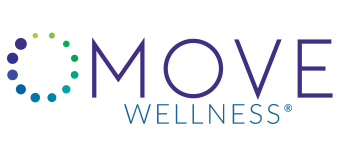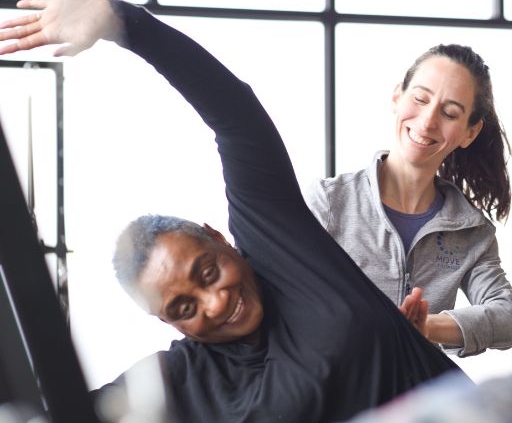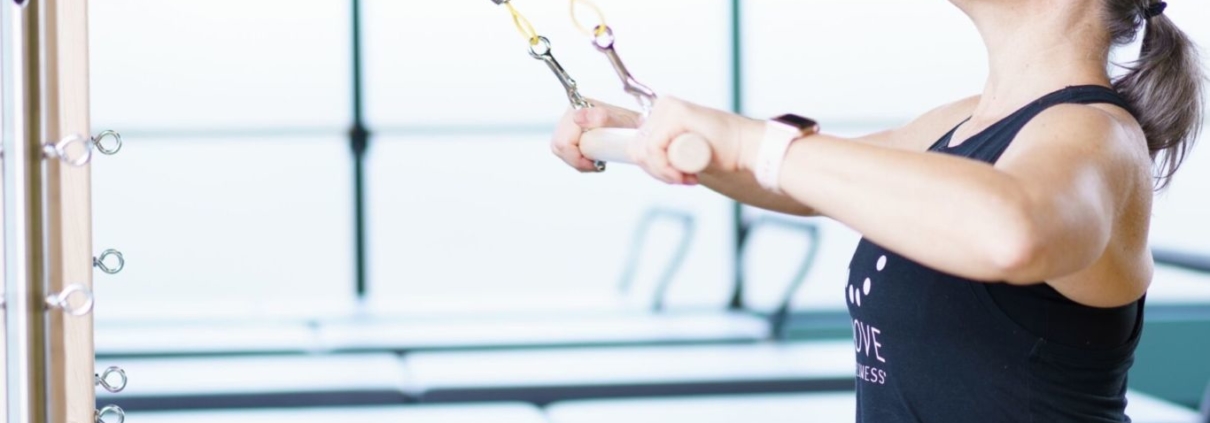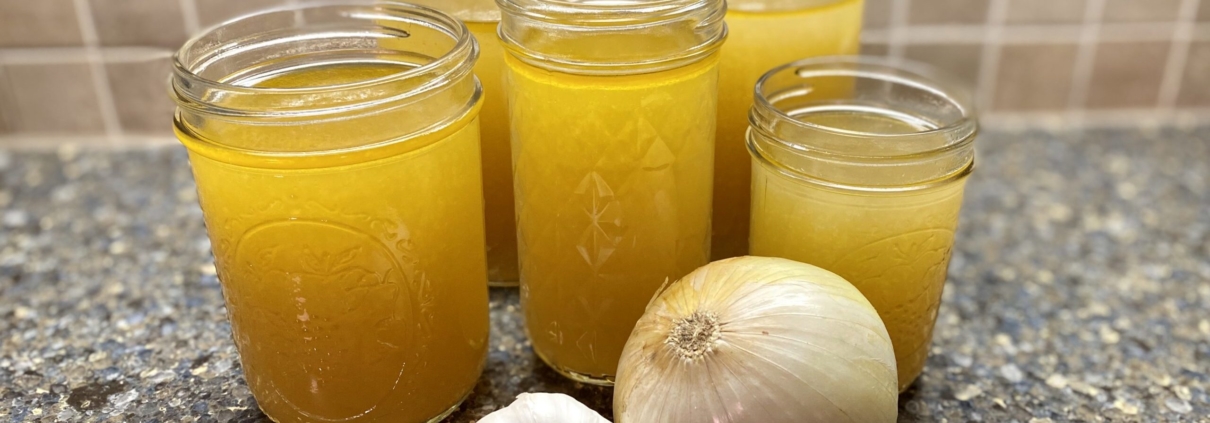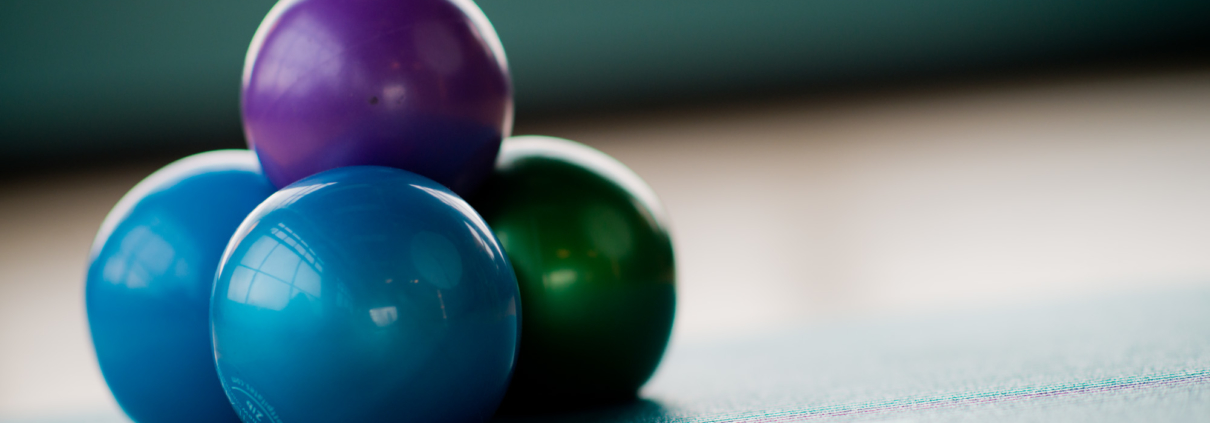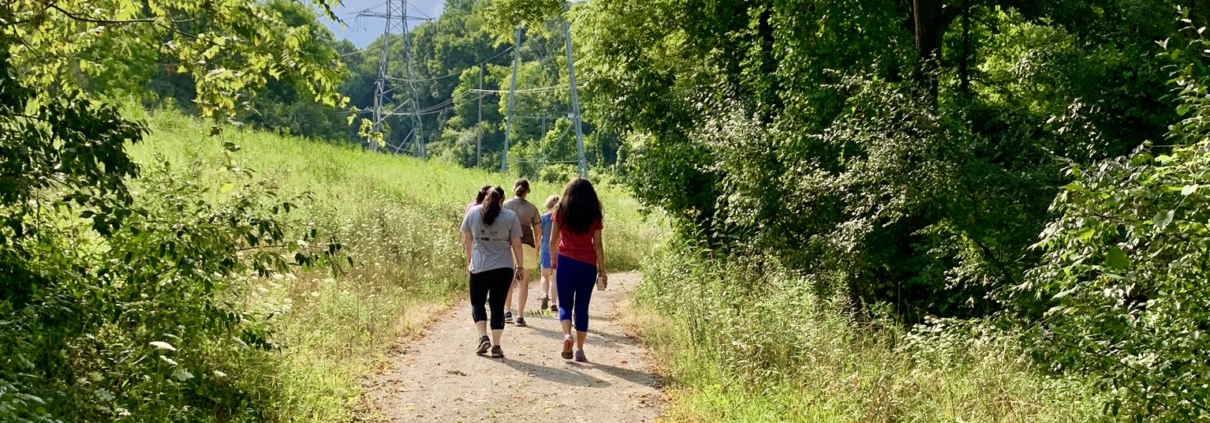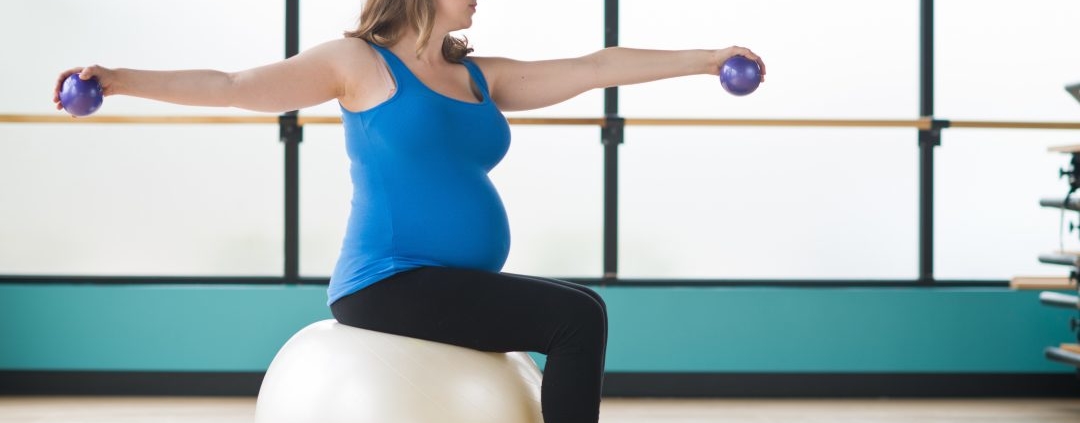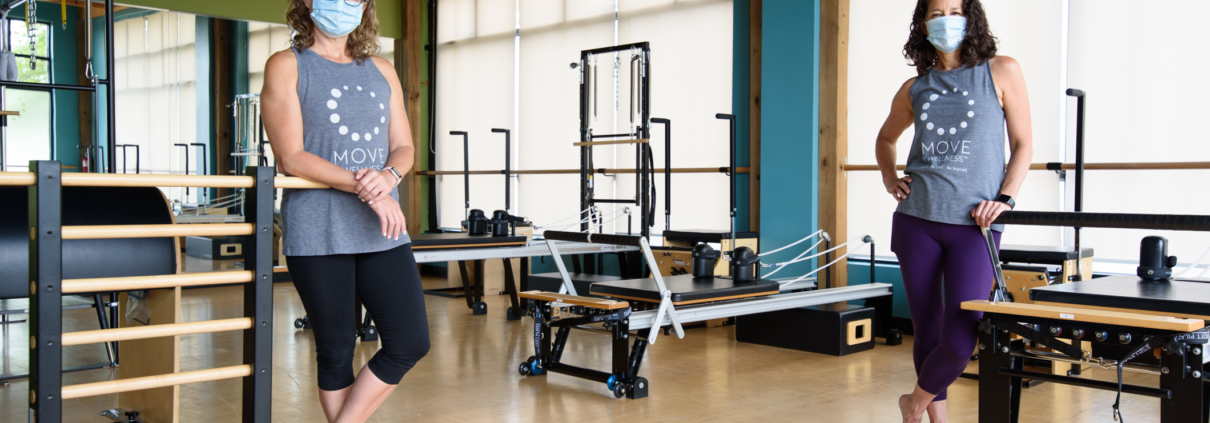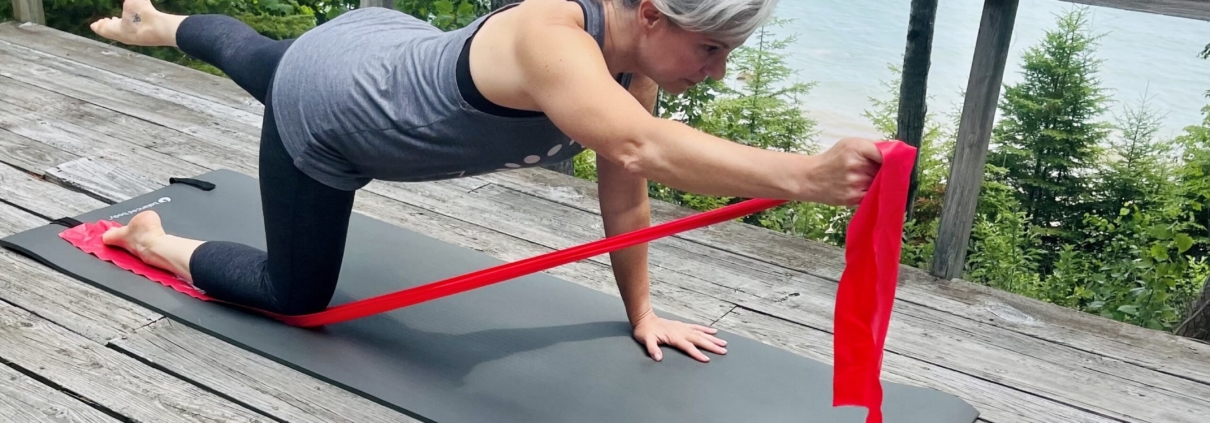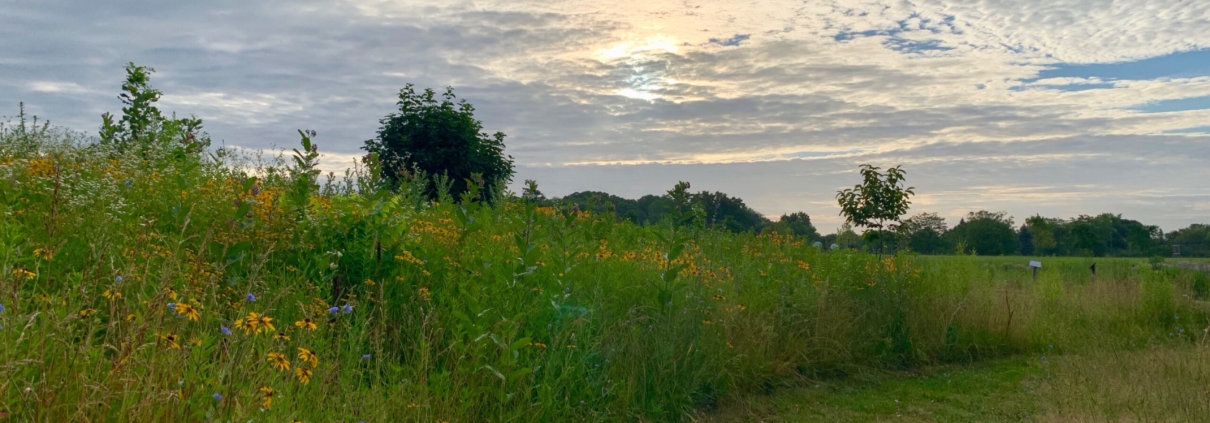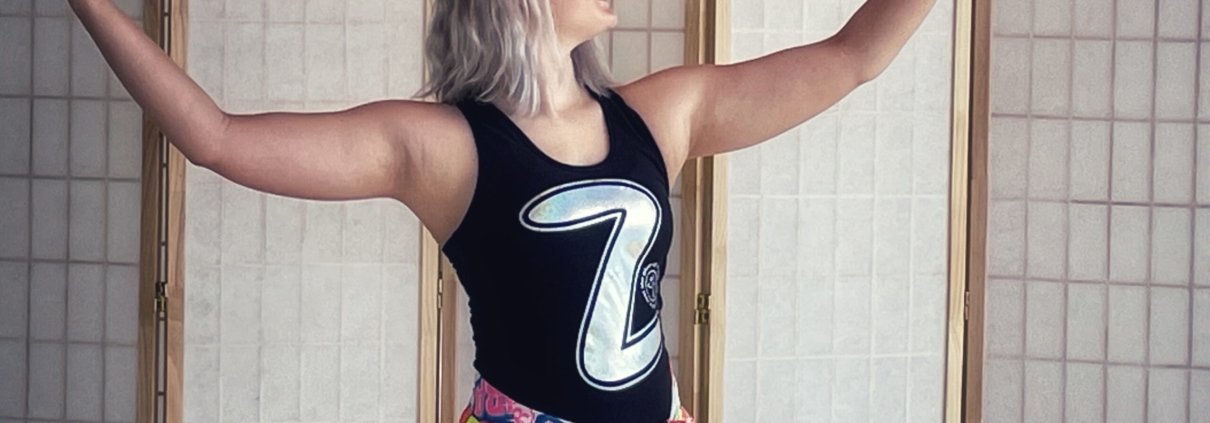Back pain can make even everyday activities challenging. Learn relatively easy, natural ways to alleviate back pain, many of which can be done from the comfort of your own home.
We are so excited to share our new six-week Pilates program, “MOVE Well in Midlife” with you. MOVE Co-Founder, Elaine Economou, has created this program to help women in midlife (ages 45-65) safely and efficiently build strength and mobility, learn mindfulness tools to relieve stress, and to be a part of a community of women with a shared experience of this time of life.
Our MOVE Well in Midlife Program allows you to join a small cohort of women and incorporates a daily, customized movement approach with additional coaching support. The goal of this program is to help you understand how to care for your unique body with an eye toward aging well and getting as strong as you want to live the life you love. Read on to learn about the program details.
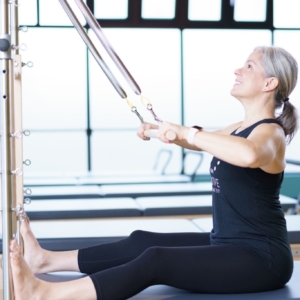
I. Challenges Faced by Women in Midlife
Midlife is a time of change for women and is often accompanied by certain challenges. Some common issues women in midlife experience include:
- Surprising aches and pains
- Worries about bone health and aging posture
- Concerns about maintaining and practicing balance
- Struggles with incontinence
- Confusion about what exercises are safe and appropriate
We often think that aging is accompanied by a decline in health with certain unavoidable changes in our bodies, but this is not the case. It is true that midlife is a time of change in your body but by incorporating consistent and focused movement practices, you can make sure you’re building and maintaining strength and stability in your body. In addition to having a strong body, research suggests healthy lifestyle changes during midlife may also prevent illness from occurring later in life (site). Our team at MOVE feels passionately that midlife does not need to be a time of fear and anxiety, but rather a call to action to take ownership of your body and provide it with the tools it needs to support you.
II. The Program: A Solution to Midlife Challenges
The truth is that it is possible to keep doing all the things that you love as you age. The MOVE Well in Midlife Program is designed to directly address challenges of midlife. With slow and steady attention to your physical health, mobility and strength, the principles of Pilates and the GYROTONIC Expansion System will help you move well and feel your best.
Here’s how:
- By moving consistently and building strength, you’ll notice fewer aches and pains
- Your daily movement practice will also bring mobility and ease to your joints and spine
- You’ll have personalized exercises that are designed for your unique body that you can incorporate at home to keep your momentum going on days you don’t have a full class
- Your workouts are also designed to maintain healthy bone density
- You’ll also spend time on breathwork geared towards mitigating stress, supporting healthy digestion, and strengthening the muscles of your pelvic floor
And remember, you’ll be surrounded by a supportive community of women. As a group, you’ll build connection and community while you learn to care for your unique body.
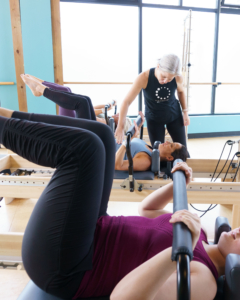
III. What’s Included in the Program?
The MOVE Well in Midlife Program is organized into the following:
- (1) one on one coaching session
- (2) in-studio classes per week
- (1) at-home virtual workout per week
- (1) personalized homework exercise routine (to be done on non-class days)
Overall, the MOVE Well in Midlife Program is a custom-designed program for women in their late 40s, 50s and 60s. You’ll have two weekly in-studio classes and one weekly virtual class. These workouts will be Pilates or GYROTONIC-based movements. You’ll focus on low impact training and also incorporate certain props to help you get the most out of each workout. Each workout has been created from scratch by Elaine specifically for women in midlife, so you’ll know each exercise is targeted just for you.
Finally, as movement experts we know that consistent participation and practice at home and in the studio is going to allow you to see clear progress and strength gains over the six weeks of the program. In addition, you’ll exit the program with new (or renewed!) exercises habits that will carry forward into your daily routine.
IV. Get Lifestyle Support in Your Coaching Sessions
In addition to classes, you’ll also have one coaching session as well as weekly accountability check-ins. You’ll have one coaching session before the program begins. This session will allow you to establish where you are at the start of the program and we’ll be checking in regularly to see how you’re feeling and progressing during the program. The coaching session will also provide you with information to look back and reflect on.
In your initial coaching session, we will check in on the pillars of well-being including stress management, sleep, and nutrition and provide you with resources to support you in these areas if you are interested. Your mid-program call will give us a chance to work together to be sure you are getting the support you need and the most out of the program.
You’ll also have weekly accountability check-ins after your at-home workouts. We know it’s not always easy to workout at home without the accountability of having to show up to a studio at a set time. That’s why we’ve incorporated these mini check-ins. You’ll be expected to confirm you’ve completed your at home class and this will help make sure you’re completing all portions of the program. Research shows that setting goals and following up with a plan for where and when to exercise helps assure that you’ll actually end up following through on your workout (site). The MOVE Well in Midlife Program does all of the planning for you, all you need to do is show up.
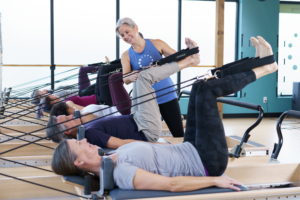
V. Benefits of Enrolling in the MOVE Well in Midlife Program
We’ve already touched on many benefits of the program but to recap, you can expect:
- Improved pelvic floor health and decreased risk of incontinence
- Improved balance and coordination, meaning your risk of having a fall is also reduced
- Strengthened core muscles, which can improve posture
- Increased flexibility, reducing joint stiffness and improving range of motion
- Enhanced cardiovascular fitness, improving overall heart health
To review, the MOVE Well in Midlife Program includes three weekly classes, two in-person and one virtual, plus customized, daily movement homework for you to do on non-class days. You’ll also have two coaching sessions and weekly, accountability check-ins so you’re able to stay on track as well as monitor and measure your progress throughout the program.
The program will directly address common challenges in midlife and you’ll leave feeling confident about your movement practice with a clear plan post-program on how to maintain your achievements during the program. As we’ve noted above, midlife is an important time where it’s critical to prioritize self-care and health to create a strong and healthy body that will support you as you age. Our program is meant to encourage women in midlife to take control of their wellbeing with the support and guidance of our team of movement experts.
Interested in joining? The program is limited to six participants so don’t wait to enroll!
We hope that summer means time for you to embrace the sun, warmth, and the joy of outdoor activities. As we all get drawn to the great outdoors, it’s essential to remember that maintaining your movement routine and staying active during the summer months is crucial for your overall well-being. Remember, “motion is lotion.” Whether you’re planning a summer vacation, dealing with travel schedules, or juggling a busy life, finding ways to keep moving can be challenging.
In this blog post, we’ll explore strategies to keep up your movement routine and workouts over the summer. We’ll cover a range of topics, from incorporating fun outdoor activities into your routine to staying active during vacations and travel. We’ll also emphasize the significance of consistency and cadence in maintaining your success, especially when life gets hectic.
So, let’s dive in and discover how you can make the most of your summer while keeping up with your movement routine and achieving your weight and fitness goals!
Embracing the Summer Lifestyle into Your Workout Routine
Adapting your movement routine to the summer season brings forth a multitude of benefits that go beyond just physical fitness. One of the primary advantages is the opportunity to enjoy the great outdoors and soak up and feel the invigorating warmth of the sun.
Engaging in outdoor activities during summer allows you to breathe in fresh air, bask in natural light, and connect with nature, promoting a sense of overall well-being.
Summer presents an array of outdoor activities that are perfectly suited to the season’s climate and energy.

- Hiking: Hiking, for example, can not only offer an excellent cardiovascular workout but also allows you to explore picturesque trails, immerse yourself in stunning landscapes, and reconnect with the beauty of nature.
- Swimming: Swimming is another fantastic option, providing a refreshing full-body workout while helping you stay cool in the summer heat. Whether it’s in a pool, a lake, or the ocean, swimming engages various muscle groups, improves cardiovascular health, and is gentle on the joints.
- Cycling: Cycling is yet another activity that thrives during the summer months. It allows you to pedal through scenic routes, whether it’s on city streets, countryside roads, or along the coastline, while reaping the benefits of cardiovascular exercise and lower body strength building.
- Body-Weight Exercises: Beach workouts offer a unique opportunity to combine exercise with relaxation. From jogging on the sand to using weights and performing the foundational Pilates mat exercises against the backdrop of crashing waves, beach workouts provide a challenging yet enjoyable way to engage your muscles and enjoy the beach ambiance.
Incorporating fun and enjoyable activities into your movement routine is essential for maintaining motivation and engagement. When you genuinely enjoy the activities you’re participating in, exercise becomes less of a chore and more of a source of joy and fulfillment.
Summer offers countless options for enjoyable activities, whether it’s joining a beach volleyball league, trying out paddleboarding, or organizing outdoor yoga sessions with friends. And remember, both Pilates and the GYROTONIC® Method have mat and chair-based exercises you can take on the go with you. By infusing your routine with these exciting elements, you’ll find yourself looking forward to your workouts and feeling more motivated to stay consistent.
So, as you adapt your movement routine to the summer season, embrace the advantages of being outdoors, explore the diverse range of activities available, and prioritize incorporating fun and enjoyable elements. By doing so, you’ll not only enhance your physical fitness but also boost your overall well-being and create lasting memories of a summer filled with adventure, vitality, and personal growth.
Staying Active on Vacation and During Travel
Vacations and travel adventures are often seen as a break from our regular routines, including our workout regimen. However, it’s important to remember that staying active during these times not only helps maintain our progress but also enhances our overall enjoyment of the experience.
When planning your vacation, consider incorporating movement and fitness into your itinerary. Research local fitness facilities, explore outdoor activities specific to your destination, or simply pack some portable workout equipment like resistance bands or a jump rope.
Exercises for the Entire Body
If hitting the gym or finding fitness studios isn’t feasible, don’t worry! There are plenty of upper body-weight exercises (and lower body exercises) that require little to no equipment and can be done in the comfort of your hotel room or any open space.
Pilates and barre both have you covered with variations on all of the following bodyweight exercises including push-ups, squats, lunges, and planks. These exercises engage multiple muscle groups and provide an effective full-body workout. You can even create your own mini-circuits, combining exercises like jumping jacks, mountain climbers, and high knees for a quick burst of high-intensity training.
Integrate Movement into Your Vacation
Consider turning your vacation adventures into opportunities for movement. Explore your surroundings by going for a jog on the beach, taking a hike in a nearby nature reserve, or renting bicycles to explore the local area.
By incorporating some form of physical activity into your travel plans, you not only maintain your fitness but also create lasting memories of a vacation filled with adventure and discovery.
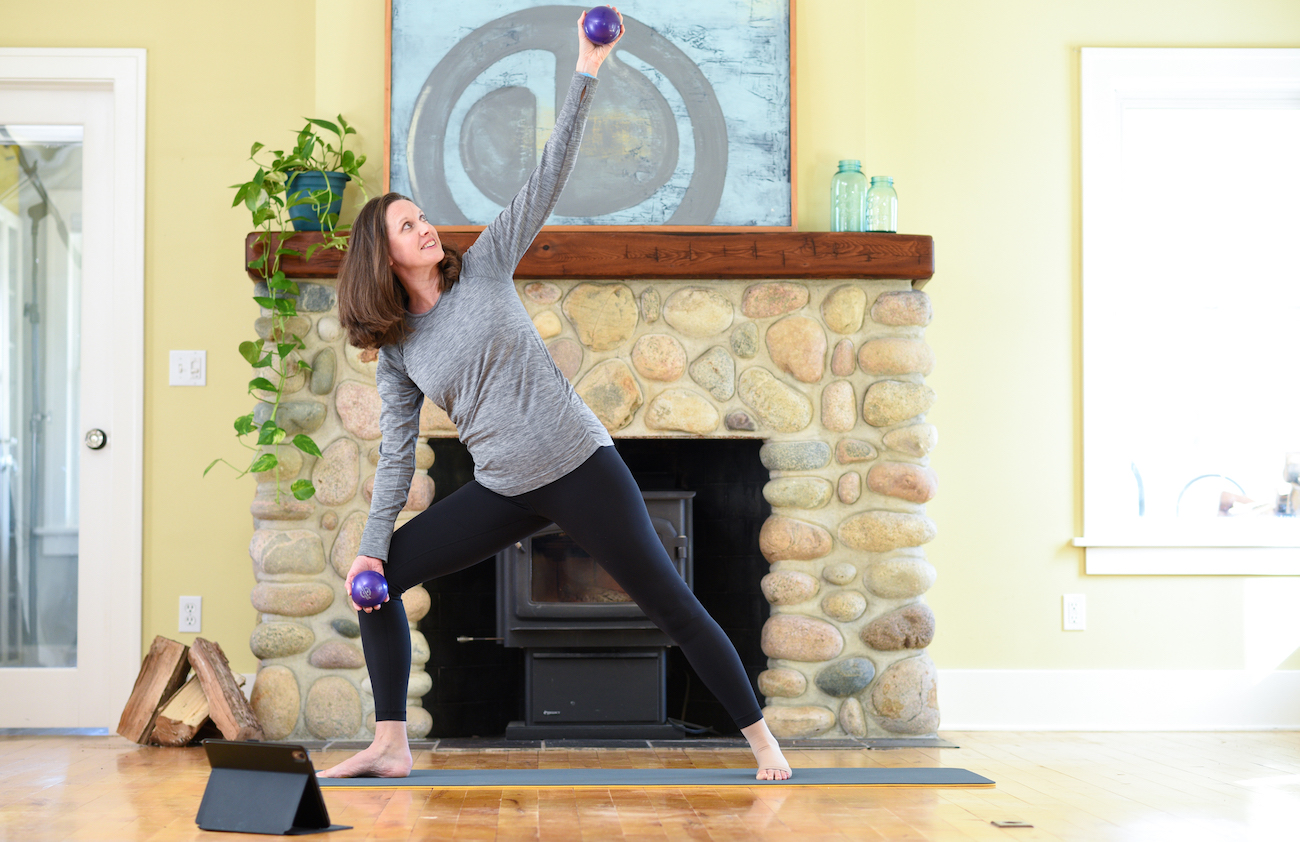
Benefits of Exercising While on Vacation
Remember, planning and scheduling your workouts in advance can greatly increase the likelihood of staying active during your travels. Pack your workout clothes and sneakers, eat well and allocate specific times during your trip for exercise. By prioritizing movement, you’ll not only maintain your progress but also experience the benefits of increased energy levels, reduced stress, and improved mood while enjoying your vacation to the fullest.
With MOVE Wellness as your trusted companion, you can continue your workouts seamlessly during travel. Whether you access our virtual classes, utilize the MOVE On Demand options, or follow our YouTube videos, you’ll have a variety of resources at your fingertips to help you stay on track no matter where your adventures take you. So, go ahead and explore the world while keeping up with your movement routine and staying committed to your fitness goals.
Keeping Your Normal Workout/Fitness Routine Schedule:
Consistency is key when it comes to maintaining progress and reaching your fitness goals. Summer may bring changes to your schedule and routine, but it’s important to find ways to adapt and stay consistent with your workouts. By maintaining a regular workout schedule each week, you reinforce positive habits and ensure steady progress towards your fitness goals.
To fit your summer schedule, consider adjusting the timing of your workouts.
Early morning or evening workouts can be particularly effective during the summer months when temperatures are cooler. Starting your day with exercise can provide a boost of energy and set a positive tone for the rest of the day. Alternatively, evening workouts can help you unwind and relieve stress after a busy day. Find the time that works best for you and commit to it consistently.
When it comes to workout locations, summer opens up a world of possibilities.
Take advantage of nearby parks, outdoor spaces, or even your own backyard. These locations offer fresh air, natural scenery, and a change of environment from indoor gym settings. Whether it’s a park with running trails, a beachfront for yoga sessions, or a local outdoor fitness area, finding alternative workout locations can make your exercise routine more enjoyable and invigorating.
Involving friends or family members in your workouts can bring added accountability and support.
Consider organizing group workouts or fitness challenges. Not only will you have a support system to keep you motivated, but you’ll also foster a sense of camaraderie and make exercise a social activity. Working out with others can be fun, inspiring, and help you stay committed to your fitness goals.
Remember, consistency is not about perfection. It’s about making a commitment to yourself and doing your best to stick to your workout schedule even amidst the summer festivities.
By adapting your routine to fit your summer schedule, finding alternative workout locations, and involving loved ones in your fitness journey, you’ll create an environment of support and accountability that keeps you on track.
Stay dedicated, stay consistent, and enjoy the rewards of progress and growth throughout the summer season.
Utilizing MOVE Wellness’s Resources
MOVE Wellness is your ultimate companion in maintaining an active summer movement routine. With a range of resources at your disposal, you can stay motivated, engaged, and on track towards your fitness goals throughout the rest of the season.
Participating in virtual classes offered by MOVE Wellness brings numerous benefits to your summer workout routine.
These classes provide flexibility and convenience, allowing you to join from the comfort of your own home or wherever your summer adventures take you. Virtual classes offer a structured workout experience led by professional instructors who guide and motivate you in real-time.
Whether it’s yoga, Pilates, cardio, or strength training, these classes offer a diverse range of options to cater to your preferences and fitness levels. With flexible scheduling, you can easily incorporate virtual classes into your summer routine, ensuring you never miss a workout.
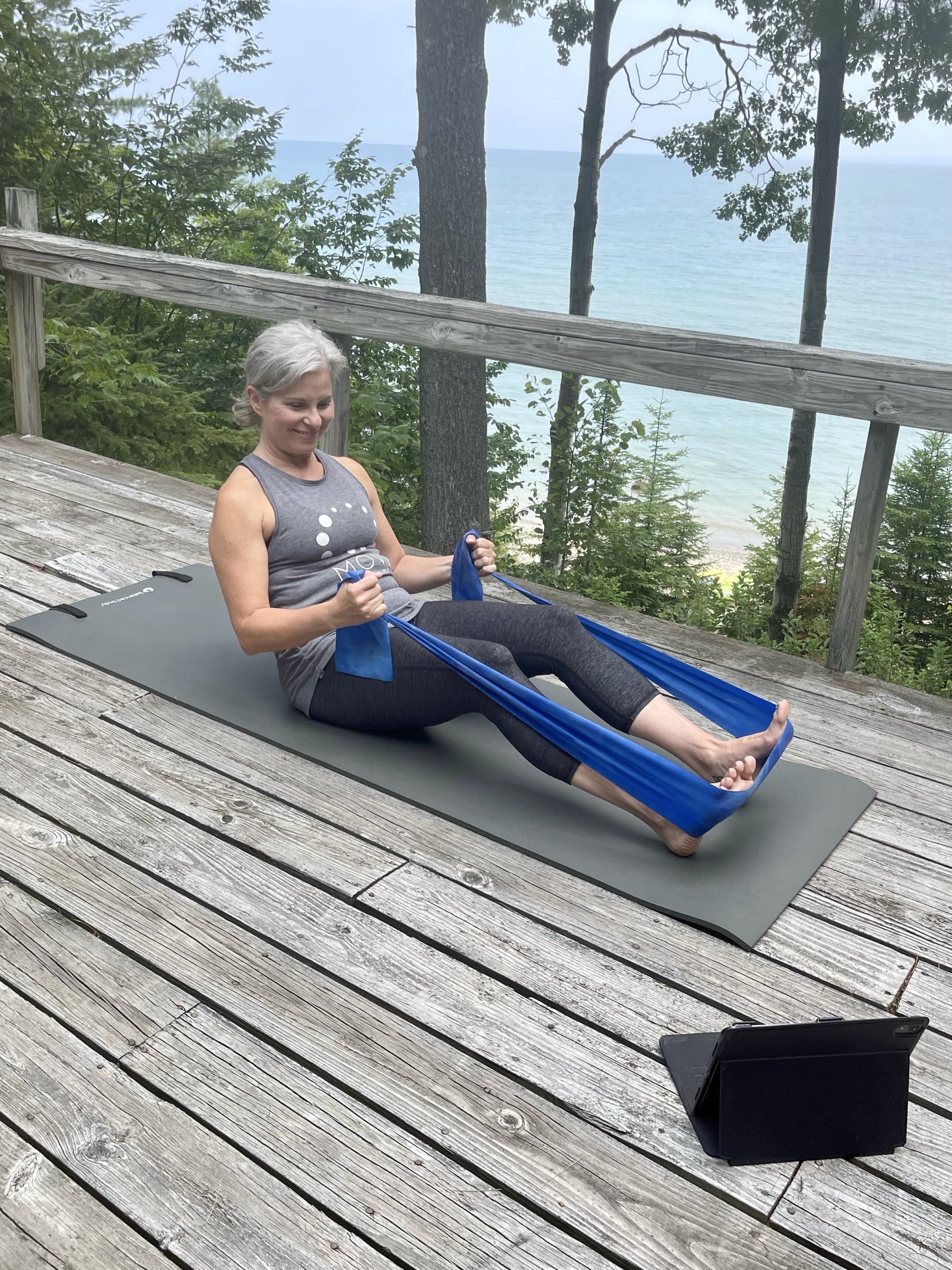
MOVE Wellness’s On Demand options provide a treasure trove of workouts that can be accessed at your own pace.
Whether you’re looking for a quick workout on a busy day or want to dive into a more comprehensive session, MOVE On Demand allows you to choose workouts that suit your time availability, body, and specific goals.
The beauty of MOVE On Demand is that it empowers you with the freedom to exercise whenever and wherever you choose. With a variety of workouts to choose from, you can customize your summer movement routine to fit your needs and preferences.
In addition to virtual classes and On Demand options, MOVE Wellness’s YouTube videos serve as an excellent resource for additional guidance and inspiration.
MOVE’s YouTube channel features a collection of workout videos, tips, and educational content that can enhance your understanding of movement, exercise techniques, and overall fitness. These videos offer a wealth of knowledge and support, serving as a valuable complement to your summer routine.
By utilizing MOVE Wellness’s entire body of resources, you gain access to a wide range of workouts, expert guidance, and the flexibility to fit exercise into your summer schedule. Whether you prefer the live interaction of virtual classes, the convenience of On Demand options, or the educational value of YouTube videos, MOVE Wellness is there to support you every step of the way.
Take advantage of these resources to elevate your summer movement routine and make the most of this season of growth, vitality, and personal transformation.
Cadence: Frequency and Consistency for Success
Establishing a regular cadence for your workouts is essential for long-term success in your fitness journey. Consistency is the key that unlocks progress and helps you reach your goals. By committing to a consistent workout plan and routine, you build discipline, develop healthy habits, and set yourself up for lasting results.
Setting realistic goals and creating a manageable schedule are crucial components of establishing a consistent cadence. It’s important to set goals that are achievable and aligned with your current fitness level and lifestyle.
Break down your larger goals into smaller, more manageable milestones that you can work towards over time. This approach allows you to track your progress and experience a sense of accomplishment as you reach each milestone along the way.
Tracking your progress is not only a way to measure your success but also a powerful motivator. Keep a record of your workouts, noting the exercises, duration, and intensity. This tracking allows you to see how far you’ve come and provides a visual representation of your dedication and hard work.
Celebrate even the small milestones you achieve, as they indicate progress and reinforce your commitment to your fitness journey.
Remember, establishing a regular cadence for your workouts is a commitment to your health and well-being.
By setting realistic goals, creating a manageable schedule, tracking your progress, and seeking support from the MOVE Wellness community, you position yourself for success.
Stay consistent, stay focused, and embrace the journey towards a stronger, healthier, and happier you.
Summer Workout Routines
To recap: we’ve explored various strategies for keeping up your movement routine and workouts over the summer, even amidst vacations, travel, and a busy schedule. We highlighted the importance of maintaining consistency, adaptability, and embracing the summer lifestyle to stay active and engaged in your fitness journey.
Remember, summer should not be a time to pause your progress, but rather an opportunity to elevate your fitness goals and experience new adventures. By adapting your movement routine to the season, exploring outdoor activities, and incorporating fun and enjoyable elements, you can stay motivated, energized, and committed to your health and well-being.
In your pursuit of maintaining a movement routine, MOVE Wellness stands ready to support you. We have a wealth of resources to keep you on track no matter where you are. Take advantage of these tools to ensure you have the guidance and inspiration you need to achieve your fitness goals.
Embrace the summer season as a time of growth, adventure, and self-care.
Let the warmth of the sun and the beauty of the outdoors ignite your passion for movement. Stay consistent, track your progress, and celebrate your accomplishments along the way. And remember, the MOVE Wellness community is here to cheer you on and provide the support you need.
Here’s to a summer filled with strength, vitality, and a renewed commitment to your health and well-being.
by MOVE instructor Davy Darnton
Pregnant bodies are forever at the mercy of public discussion, whether we want them to be or not. And women experiencing the physical, psychological and emotional weight of pregnancy need strong supportive communities available to them before, during and beyond childbirth. As I reflect on the arrival of my second and third children, I can feel the weight of the social expectations surrounding my body nearly everywhere I go.
Public expectations of the pregnant body
I remember once, at 29 weeks pregnant, I was asked by a complete stranger if I was having twins, while another person casually commented that I “looked like I was about to pop.” I explained to them that I did in fact have only one baby in my belly and that I wasn’t due for another couple of months.
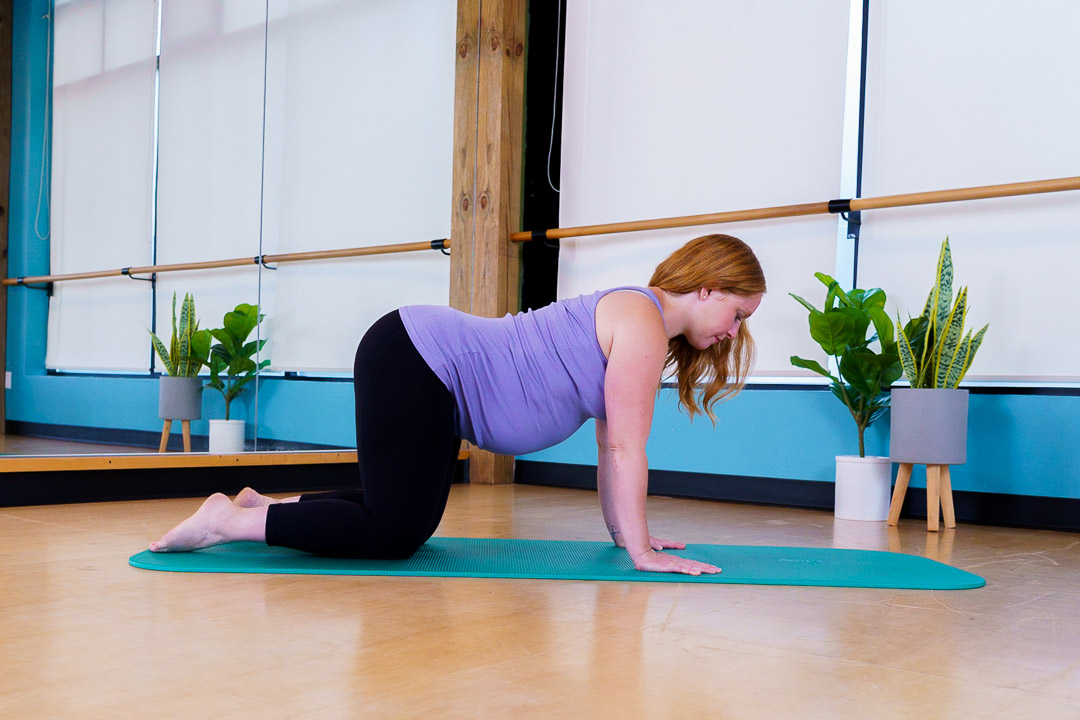 As a Pilates instructor and mother, I wanted to shout from the rooftops, “This is what a healthy woman who is five feet tall and seven months pregnant looks like!”
As a Pilates instructor and mother, I wanted to shout from the rooftops, “This is what a healthy woman who is five feet tall and seven months pregnant looks like!”
The goal during pregnancy is simple: Keep yourself healthy, keep your baby healthy. And a healthy you and a healthy baby mean weight gain and a big belly. And I’ll never understand why people expect pregnant women to look small. Sure, the weight gain bothered me a bit during my first pregnancy. But now looking back on my third pregnancy, I know exactly what my body is doing: it’s transitioning into “milk truck” mode. And if becoming rounder and fuller means I birth a healthy baby and am able to feed that baby, great. Bring on the soft, supple body.
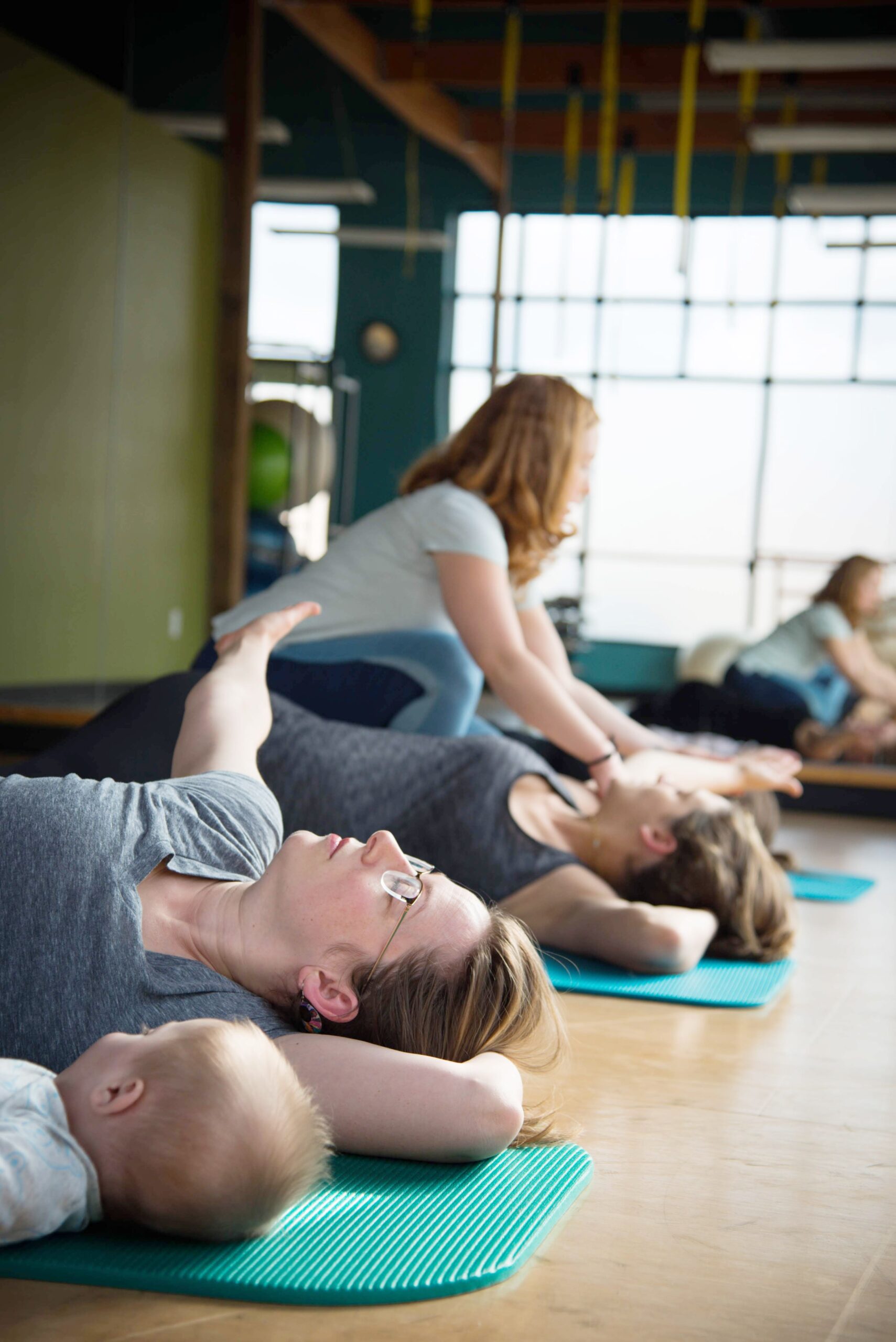
The myth of the postpartum body “bouncing back”
Recently, a male friend of mine whose sister is pregnant asked me, “So, you bounce back pretty quickly right?” I looked him right in the eyes and said, “There’s no bouncing back. Your body is never the same after pregnancy and birth.” It wasn’t the answer he was expecting.
The whole idea of bodies bouncing back is pretty silly. Our bodies aren’t basketballs, and that’s a good thing. Life moves forward, not backward. We should be encouraging women to celebrate the new bodies they have, not stigmatizing the changes that accompany them. This shouldn’t be a revolutionary concept, and yet somehow it still is.
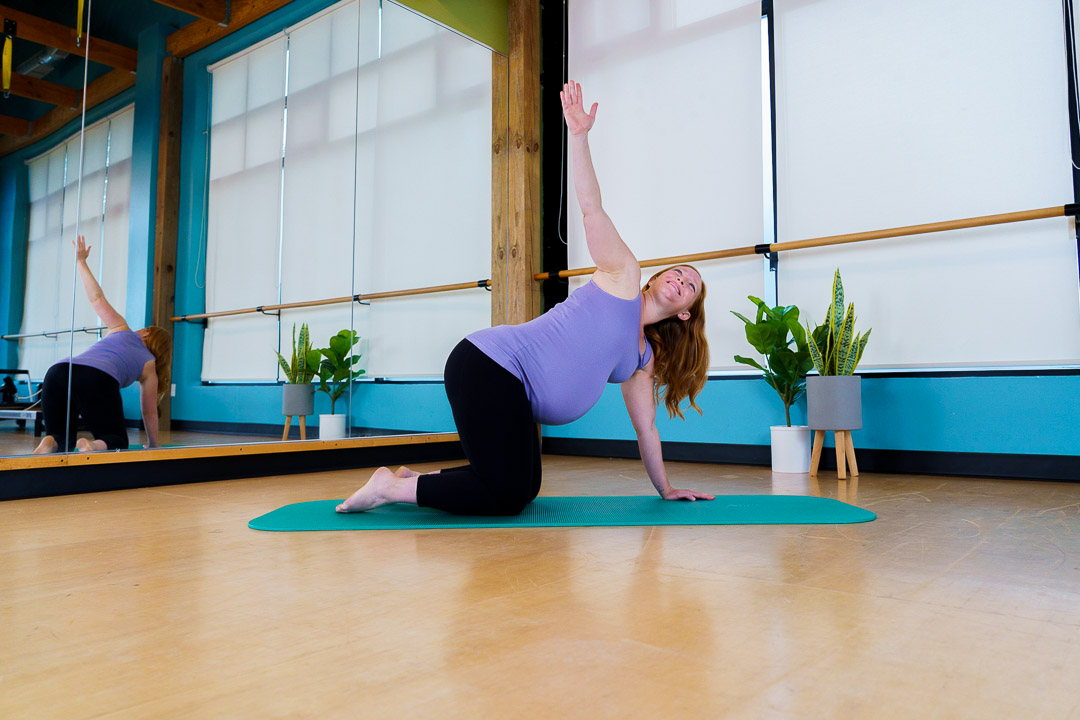 I can’t tell you how many clients I work with who are experiencing multiple pelvic organ prolapses and incontinence because of the counterproductive expectations and narratives surrounding the pregnant and postpartum body. During pregnancy, our bodies are preparing for birth. That means opening and loosening, not restricting and tightening. After pregnancy, our bodies work and move in new ways, and we should embrace that. There’s no going back to “maidenhood” after motherhood. And why would you want to?
I can’t tell you how many clients I work with who are experiencing multiple pelvic organ prolapses and incontinence because of the counterproductive expectations and narratives surrounding the pregnant and postpartum body. During pregnancy, our bodies are preparing for birth. That means opening and loosening, not restricting and tightening. After pregnancy, our bodies work and move in new ways, and we should embrace that. There’s no going back to “maidenhood” after motherhood. And why would you want to?
Pregnancy, celebrities and the media
If there were every two ideas perfectly at odds with one another, they would be a healthy pregnant body and the media’s representation of pregnancy. We see celebrities on television and in magazines (with a full arsenal of personal trainers and nutritionists behind the curtain) basking in the glow of their pregnancies until about six or seven months in, and then they disappear until they’ve magically “bounced back” to their prenatal bodies. Or so the media would have us believe.
Pilates is for every body
One of the most troubling aspects of social expectations surrounding body image, of the pregnant body or any body, is that they fail to acknowledge that we are all individuals with unique body shapes and sizes.
A pregnant woman who is six feet tall with wide hips is going to carry a baby differently than one who is five feet tall with narrow hips. Similarly, someone who’s just given birth is going to look and move differently than someone recovering from a stroke or spinal surgery. Which is why focusing on the health and function of your body from the inside out (rather than what it looks like on the outside) is the key to feeling better and stronger, and living longer.
My favorite thing about teaching Pilates as a movement practice is that it helps you feel better and more balanced, whether your motivation for doing it comes from wanting to fix lower back pain from years of sitting at a desk or just a basic desire to look better in a swimsuit.
A fit pregnancy and the GYROTONIC® method
One of the fundamental problems with the word “fit” is that, for most people, that means tight and toned, or more accurately, constricted. Pregnant women need their bodies to open and release, not tighten up.
We need mobility and stability. We need our spines and sacrums to glide through their full range of motion. We need our femurs to articulate properly in our hip sockets and we need our tailbones to wag.
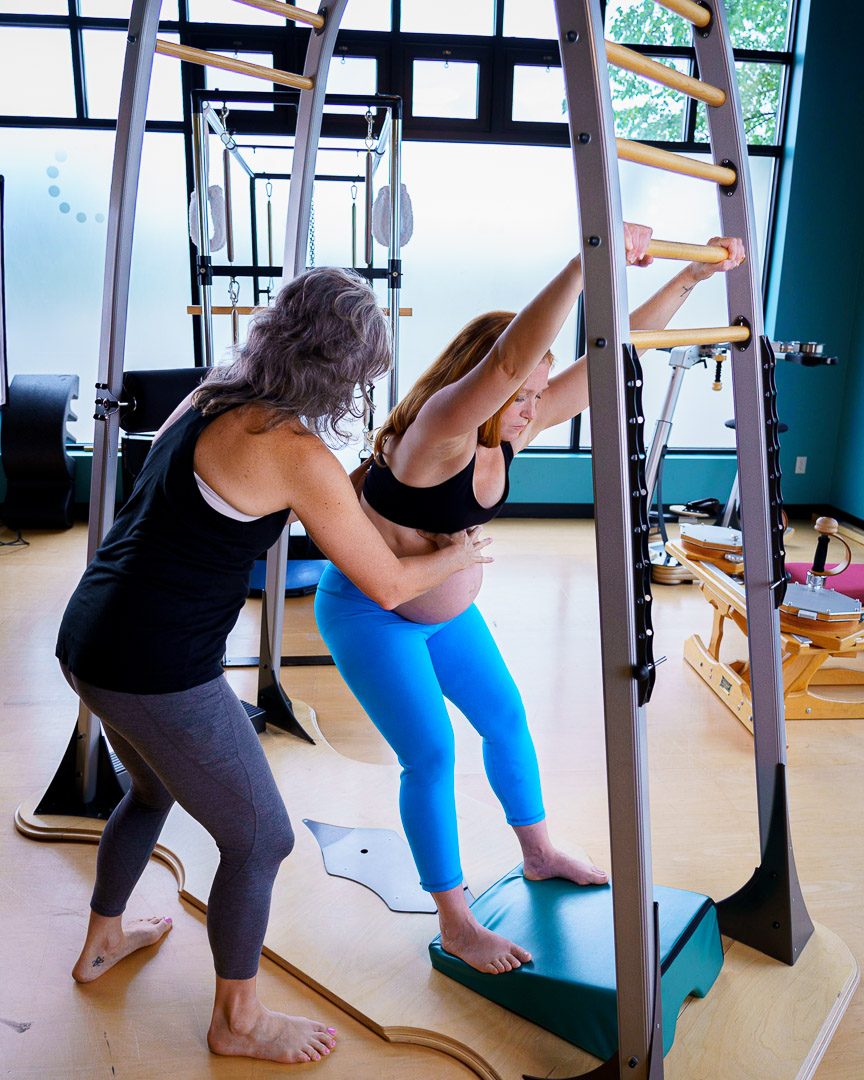 A “fit pregnancy” isn’t about weight lifting and more traditional exercises methods, although it can certainly include those things when done safely and thoughtfully. Prenatal exercise should include a harmonious blend of fascial stretching and muscle strengthening.
A “fit pregnancy” isn’t about weight lifting and more traditional exercises methods, although it can certainly include those things when done safely and thoughtfully. Prenatal exercise should include a harmonious blend of fascial stretching and muscle strengthening.
In July 2017, I started learning the GYROTONIC® method to get out of my comfort zone a bit and learn a more dynamic way of moving my body. At first I was overwhelmed, and moving that way felt foreign to my body. But then I fell in love with it.
I started working toward certification as a GYROTONIC® instructor later that year completed my final certification course at 28 weeks pregnant in April 2019. It was a joyful and empowering physical experience. I left feeling energized, strong and ready to enter and embrace my third and fourth trimesters.
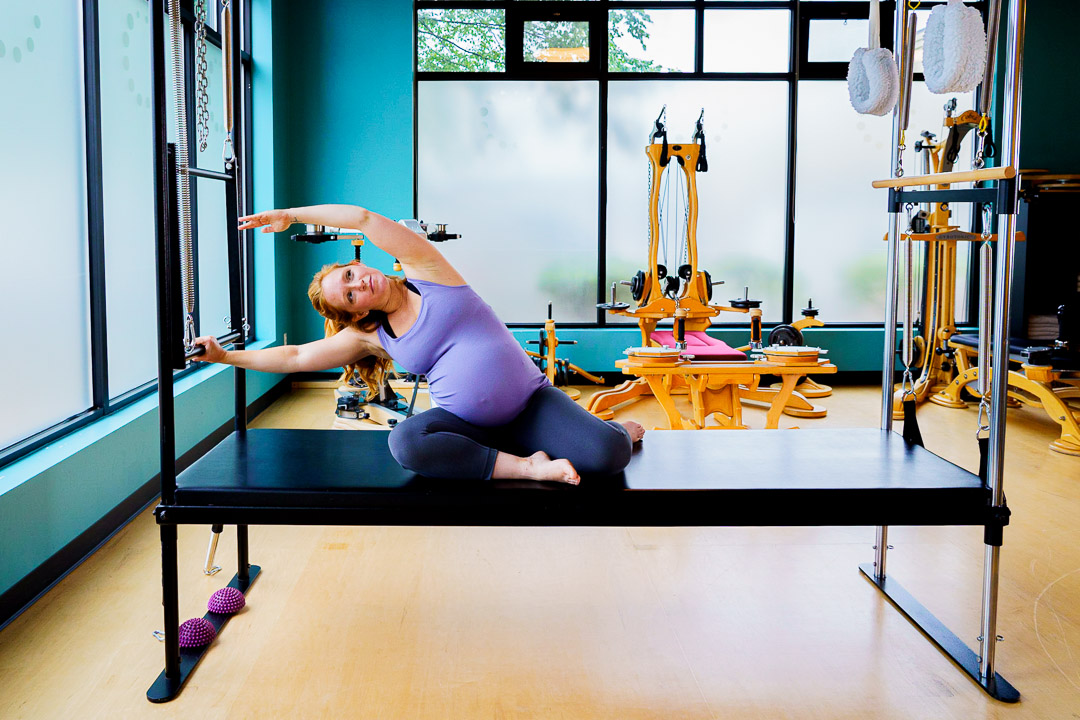 After the birth of my first child, I grew tremendously as a Pilates instructor because I was able to apply that knowledge base and movement practice to my own body as it healed. And now, I’m geeking out on movement in anticipation of the healing process again, this time with GYROTONIC® also in my toolbox. And beyond my own postpartum healing, I look forward to bringing this deeper knowledge to my work with clients when I return from maternity leave.
After the birth of my first child, I grew tremendously as a Pilates instructor because I was able to apply that knowledge base and movement practice to my own body as it healed. And now, I’m geeking out on movement in anticipation of the healing process again, this time with GYROTONIC® also in my toolbox. And beyond my own postpartum healing, I look forward to bringing this deeper knowledge to my work with clients when I return from maternity leave.
I feel nourished and supported through the movement work I’m doing now, and like I’m working with my body and my baby, rather than against them.
Community support and movement practices for pregnant women
If you really want to be supportive of and say the right thing to women who are expecting, here’s my advice: stop commenting on their bodies. Instead, try saying one of the following:
- You look so healthy and wonderful.
- When are you due? (with a tone of genuine curiosity, not judgment)
- I really hope everything continues to go smoothly and that you have a joyful birth.
- What are you most looking forward to?
- After the baby is born, can I help by bringing you dinner or anything else?
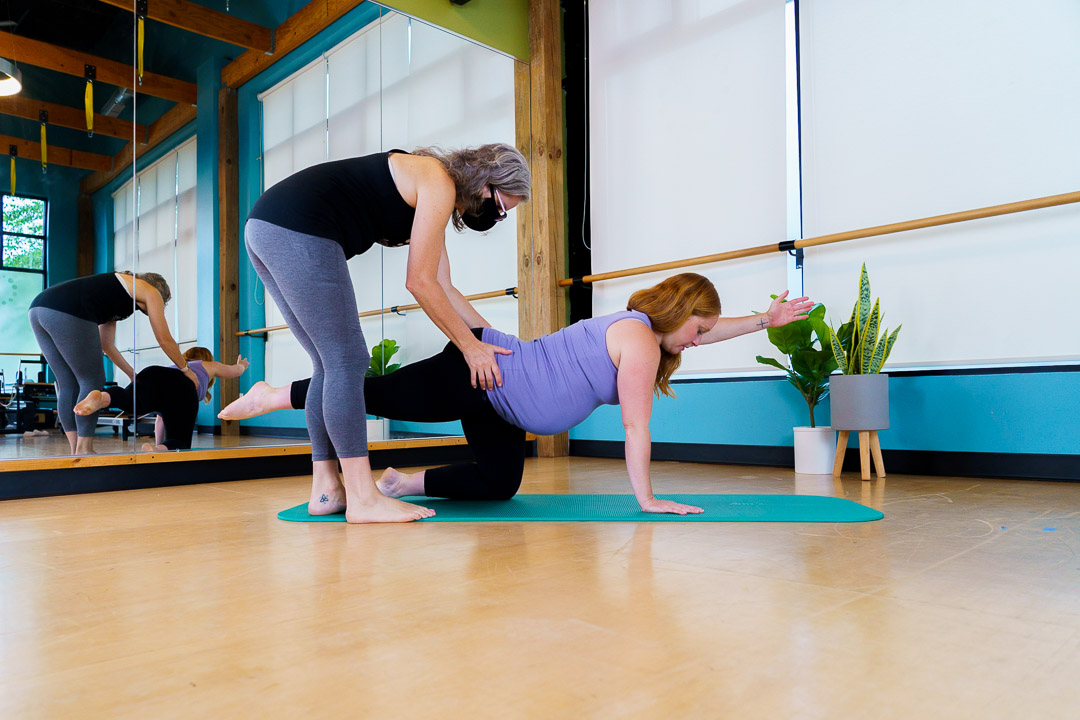 Along those same lines, it’s also important to know what not to say. Pregnant women do not want to hear about your cousin’s traumatic high-risk birth story, or about their pregnancy “waddle,” or anything else that might compound the natural amount of anxiety and uncertainty we experience while pregnant.
Along those same lines, it’s also important to know what not to say. Pregnant women do not want to hear about your cousin’s traumatic high-risk birth story, or about their pregnancy “waddle,” or anything else that might compound the natural amount of anxiety and uncertainty we experience while pregnant.
Pregnant women need access to the wisdom and resources of other women who have already given birth and/or movement instructors who understand how prenatal and postpartum bodies work, move and heal. We need to understand what physical challenges are normal, common and treatable after we give birth.
We need a supportive team of experts including physicians, midwives, pelvic health physical therapists, pre/postnatal fitness instructors, friends and family who will collectively help us feel empowered rather than helpless. We need nourishing foods that help our babies grow, and that help us heal mentally and physically.
It often feels to me like our culture has lost so many of the communal support structures for women before and after pregnancy. Women aren’t supposed to do this alone. We can’t heal from childbirth if we’re not resting enough. We can’t just jump back into the daily grind without risking pelvic organ prolapse, incontinence and a range of mental health challenges.
Investing in smart, safe prenatal movement practices and a postpartum period that celebrates the new body you have, rather than clinging to the old body you left behind, is an investment in the health of your whole family, whatever that family may look like.
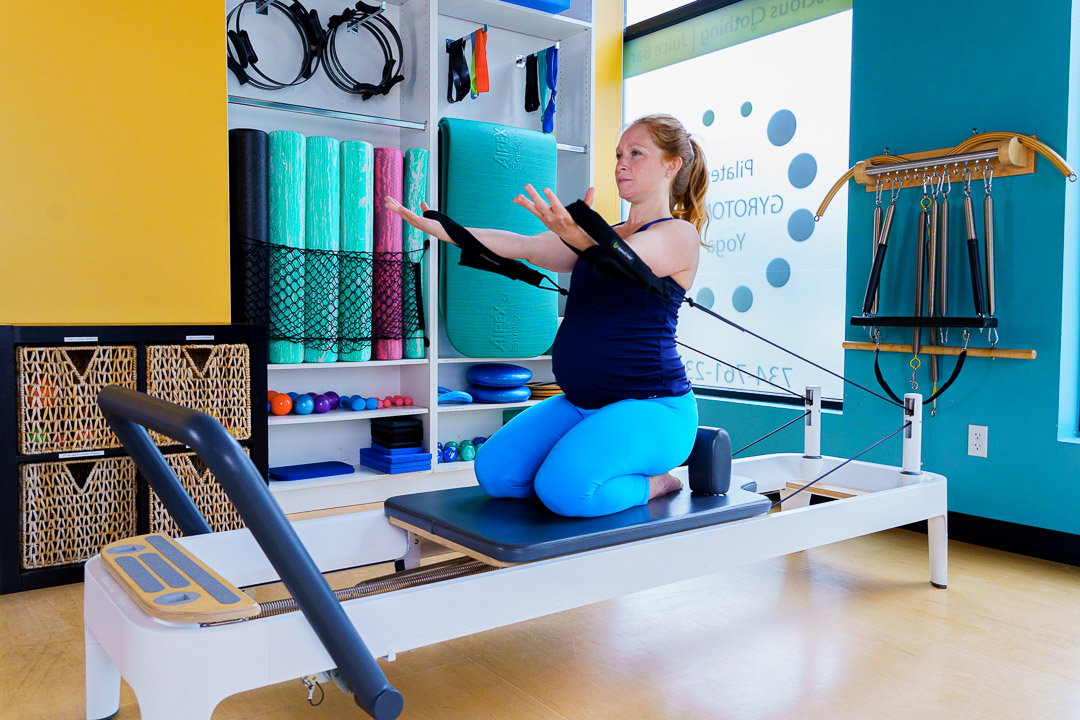
Want to learn more about the benefits of Pilates and GYROTONIC® for before and after pregnancy? Looking for a supportive and knowledgeable community to help you support and celebrate the body you have? Visit movewellness.com or call 734-224-2560.
 Davy Darnton is a STOTT Pilates and GYROTONIC® instructor at MOVE Wellness in Ann Arbor and can be found on Instagram at @davydarnton.movement.
Davy Darnton is a STOTT Pilates and GYROTONIC® instructor at MOVE Wellness in Ann Arbor and can be found on Instagram at @davydarnton.movement.
Your Workout. Your Choice.
We’re here for you—however you want to move with us. We recognize that some of you are eager to join us in-studio while others would prefer to wait for now. We respect whatever decision is best for you—your workout, your choice. Safety protocols are in place in the physical studio and MOVE Wellness is currently scheduling private sessions and small group classes. Our livestream classes continue to be available, and virtual private and small-group training sessions are also an option to meet a wide-range of client needs. We invite you to choose the mix of in-studio or at-home training that’s right for you.

Your Safety in Our Studio
When you’re ready to visit MOVE in-person, we want you to feel safe. So we’re taking important steps to make sure you’re comfortable. Here are the primary COVID-19 protocols we have in place.
- The studio layout has been redesigned to allow for physical distancing and a streamlined flow of clients.
- The number of people allowed in-studio at any given time will be limited.
- New windows and ceiling fans have been installed to allow fresh airflow.
- We have added UVC light filtering to our HVAC system to kill any airborne virus particles that pass through.
- Cotton gloves will be made available to clients who wish to use them.
- Masks are optional for clients. Staff will be mask-optional when Washtenaw County is in the CDC low or medium community level. Masks will be required for staff when Washtenaw County is in the CDC high community level. Clients are welcome to ask their trainer to wear a mask for any individual session. Please reach out to us with any specific questions or concerns.
- Stringent cleaning protocols with approved cleaning solutions are in place for all equipment and touched surfaces.
- We have a UVC light wand for extra sanitizing of props and equipment.
- Reusable items (fabric straps, gloves, etc) will be sanitized according to the CDC approved guidelines.
- We ask all clients and staff to stay home if experiencing 2 or more of the following symptoms: fever, chills, repeated shaking with chills, muscle pain, headache, sore throat, cough, congestion or runny nose, nausea or vomiting, diarrhea, loss of taste and/or smell.
We will continue to monitor local, federal, state, and international guidelines for any changes in recommendations, cleaning strategies and best practices. We continuously update our policies as needed and you can trust that we will always keep the lines of communication open.
You CAN Start Now
Ready to get started with an in-studio training session? We’re happy to continue to see you online for private sessions, or livestream classes. We look forward to designing a safe and comfortable plan for each and every member of our community. Your workout—your choice.
Please feel free to reach out to us at office@movewellness.com with any questions or concerns you may have.
Be Fit. Be Well. Be Inspired.
Elaine, Robin, Rachel and Staff
A Picture is Worth A Thousand Words
To help you visualize the changes at MOVE, we want to share some photos of our new equipment arrangement in both studios to allow for physical distancing, as well as our new windows that open and ceiling fans to enhance airflow. We’re so excited about these changes to safely welcome you back into our space.
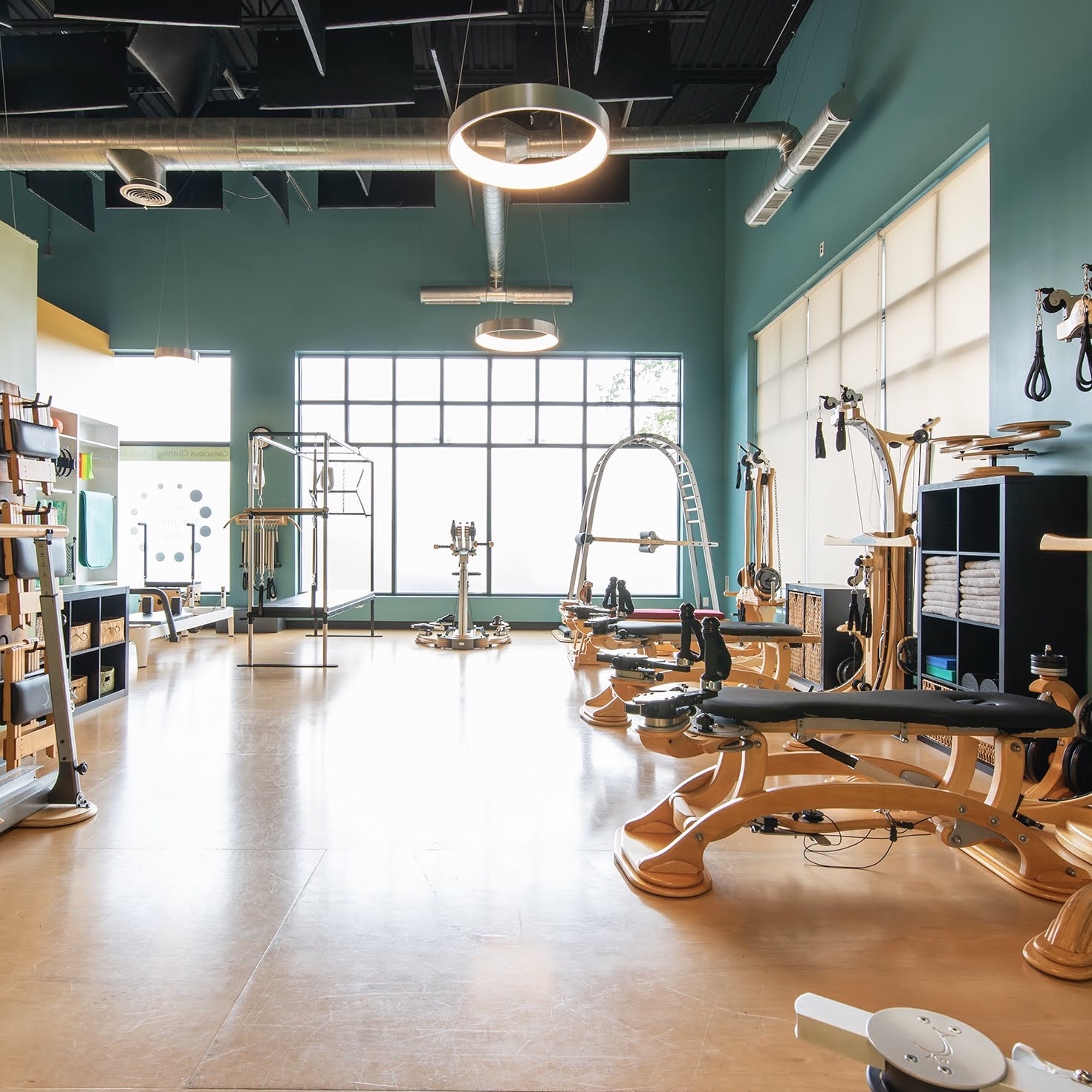
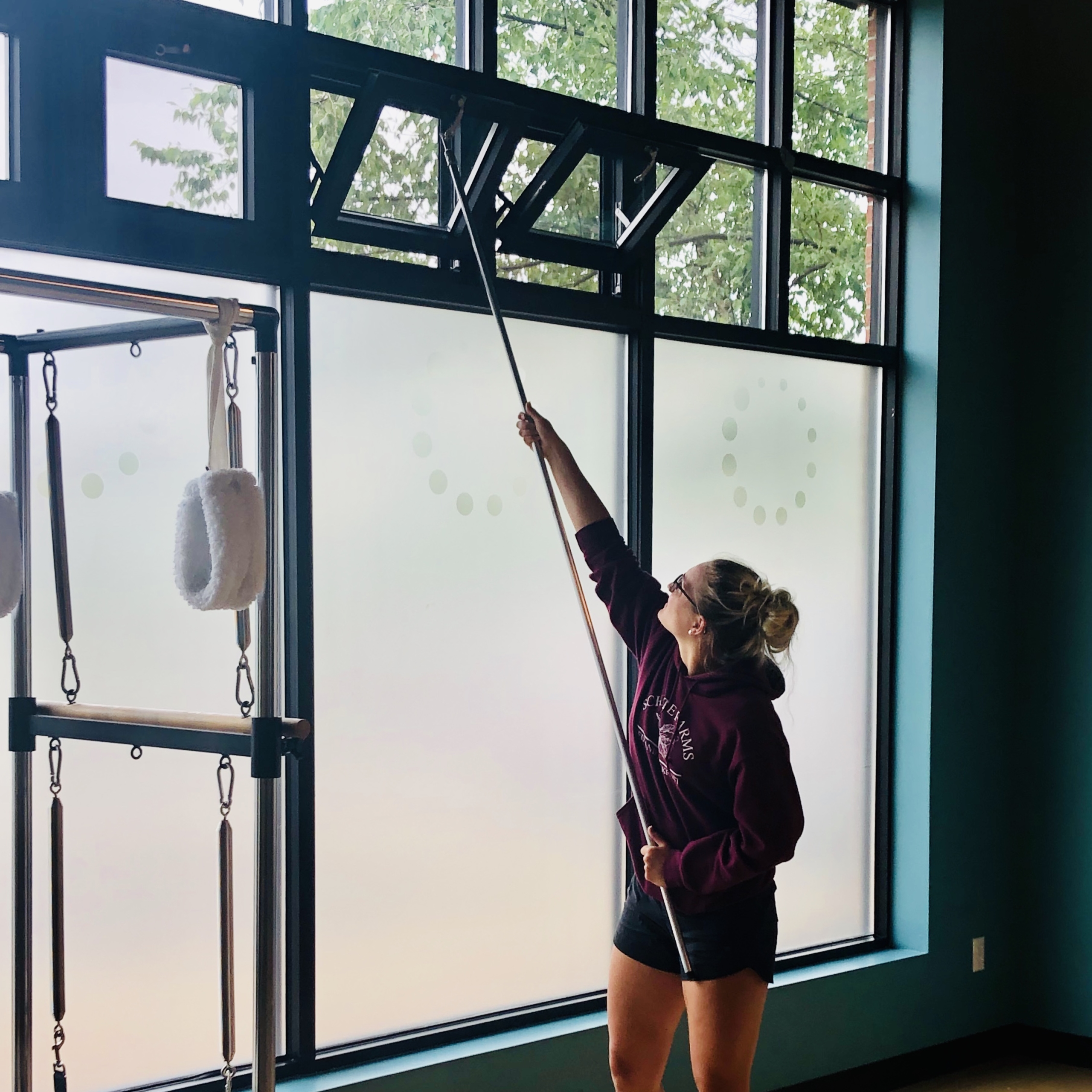
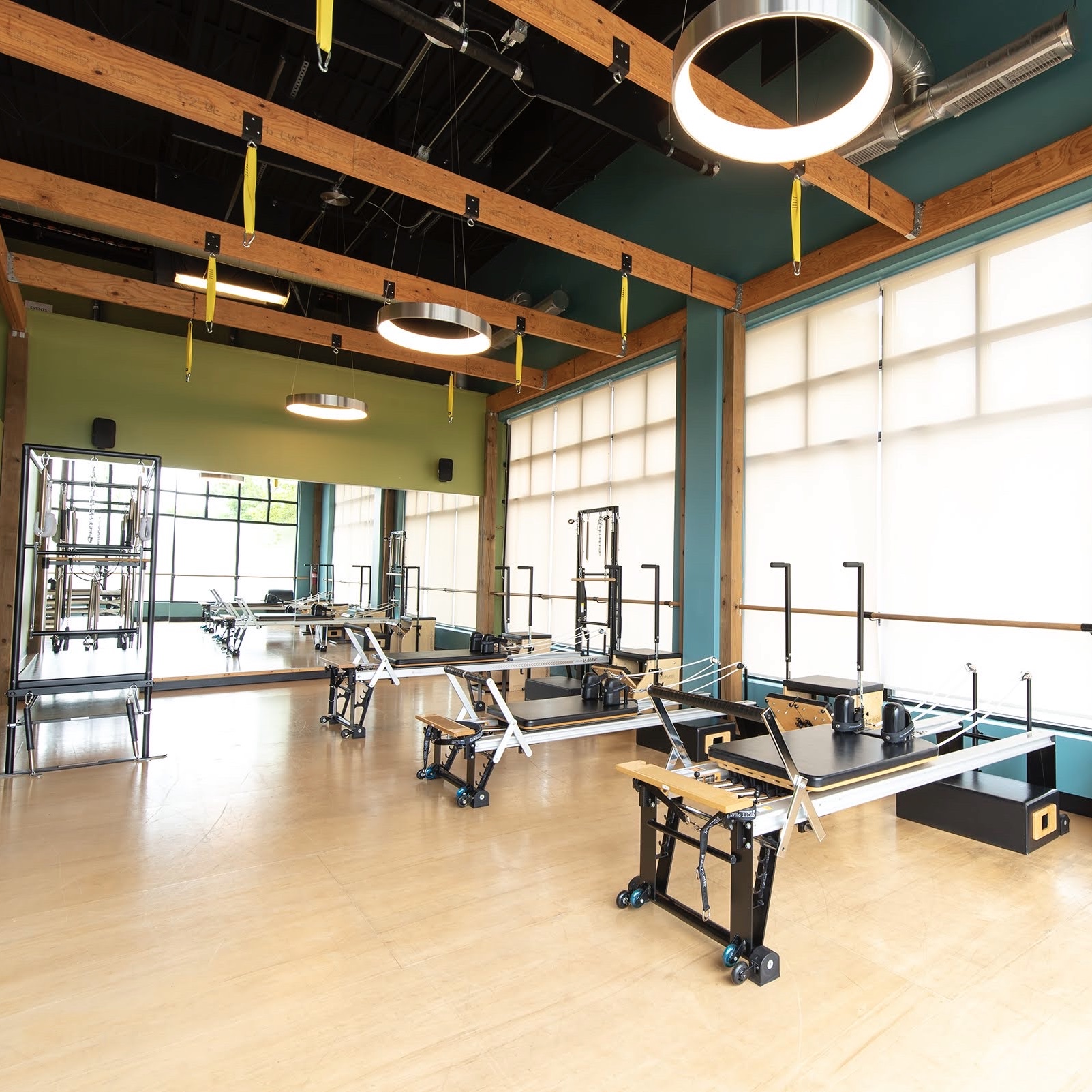
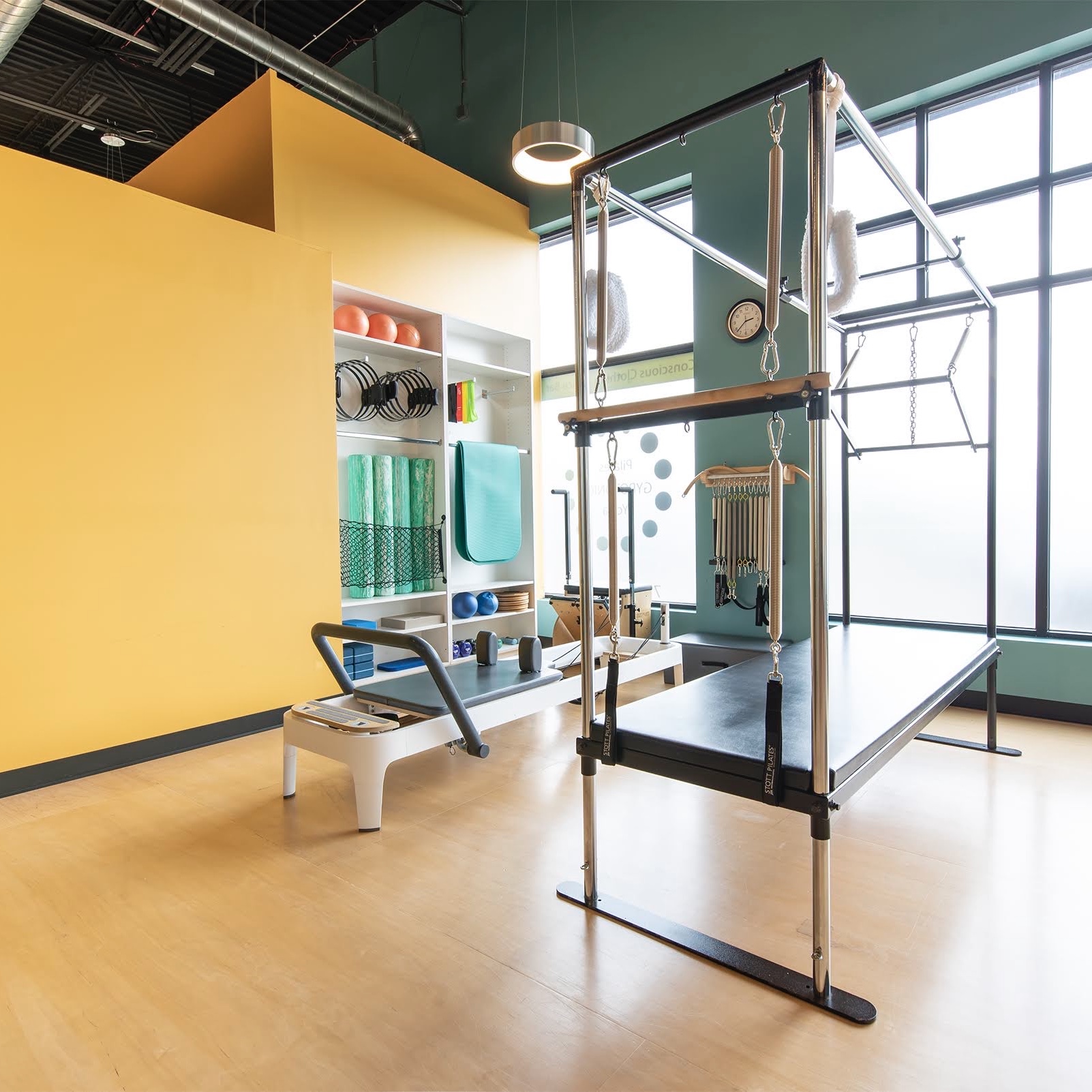
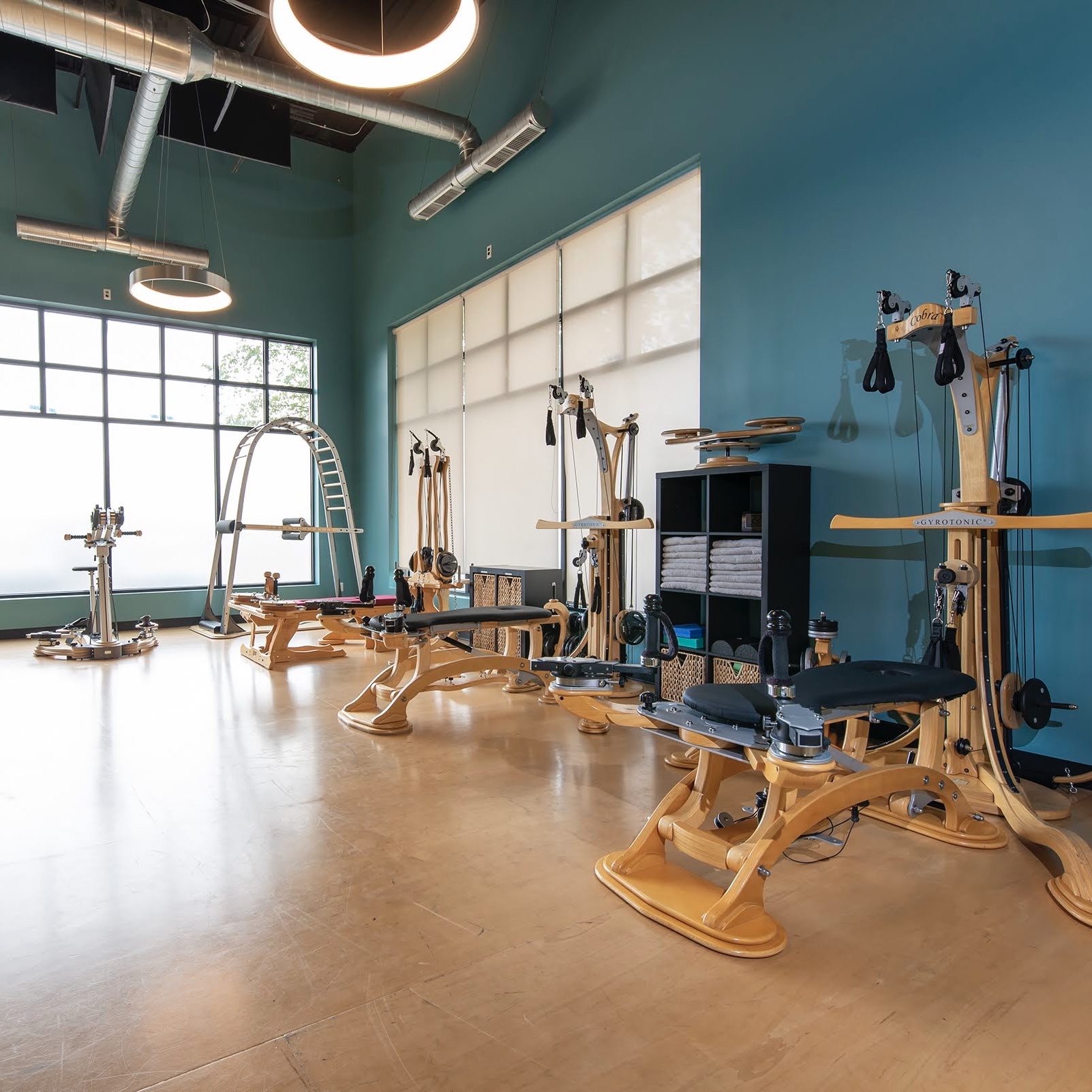
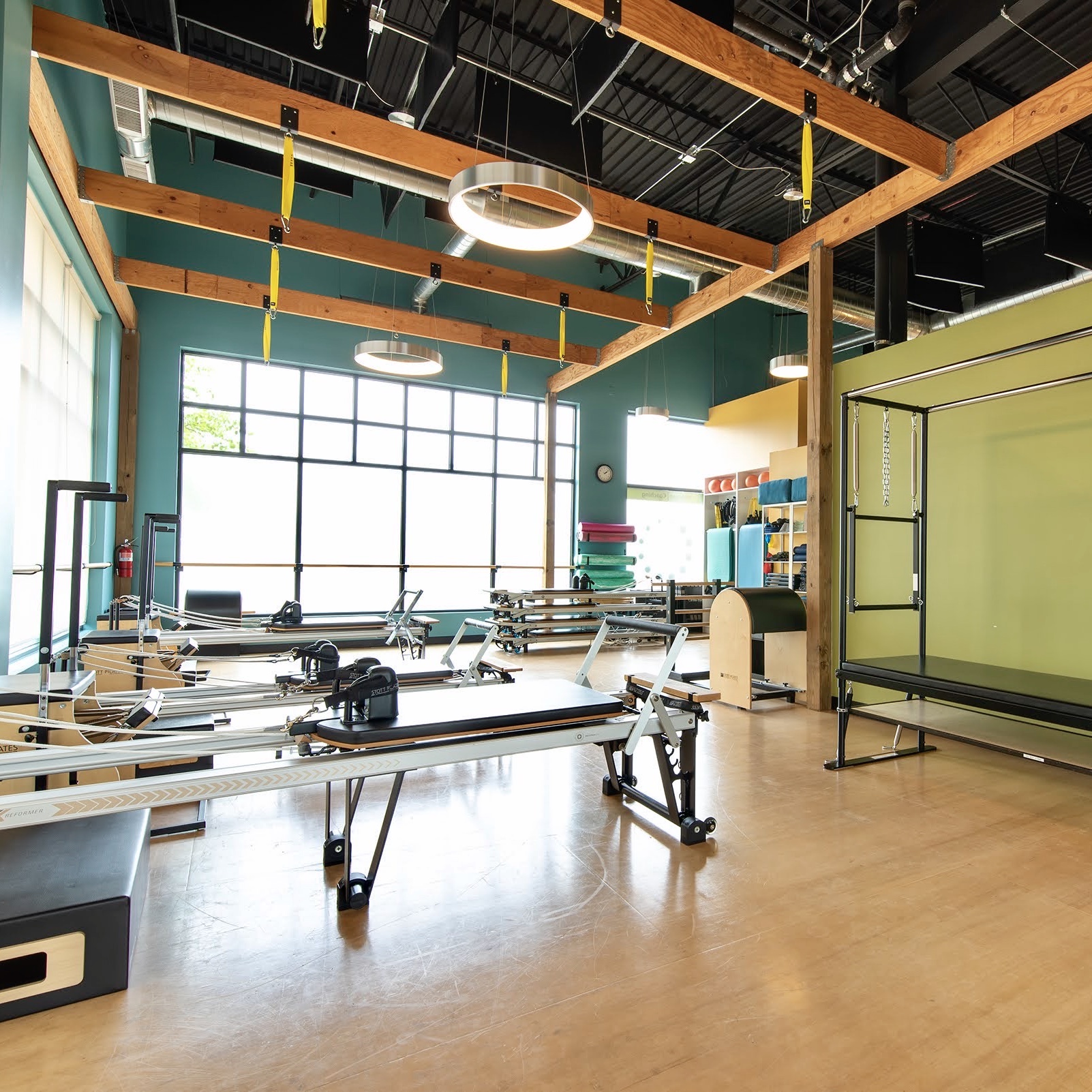
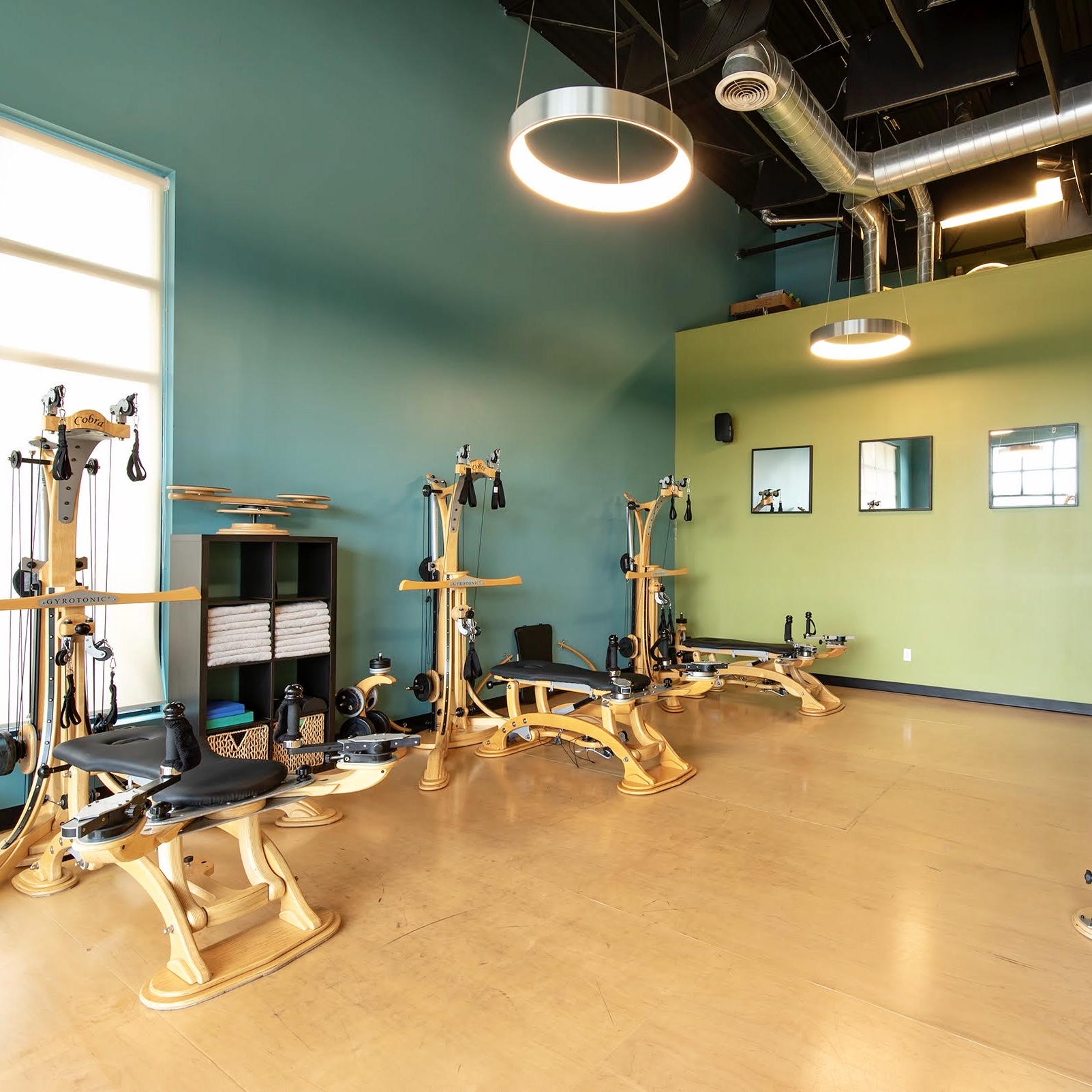
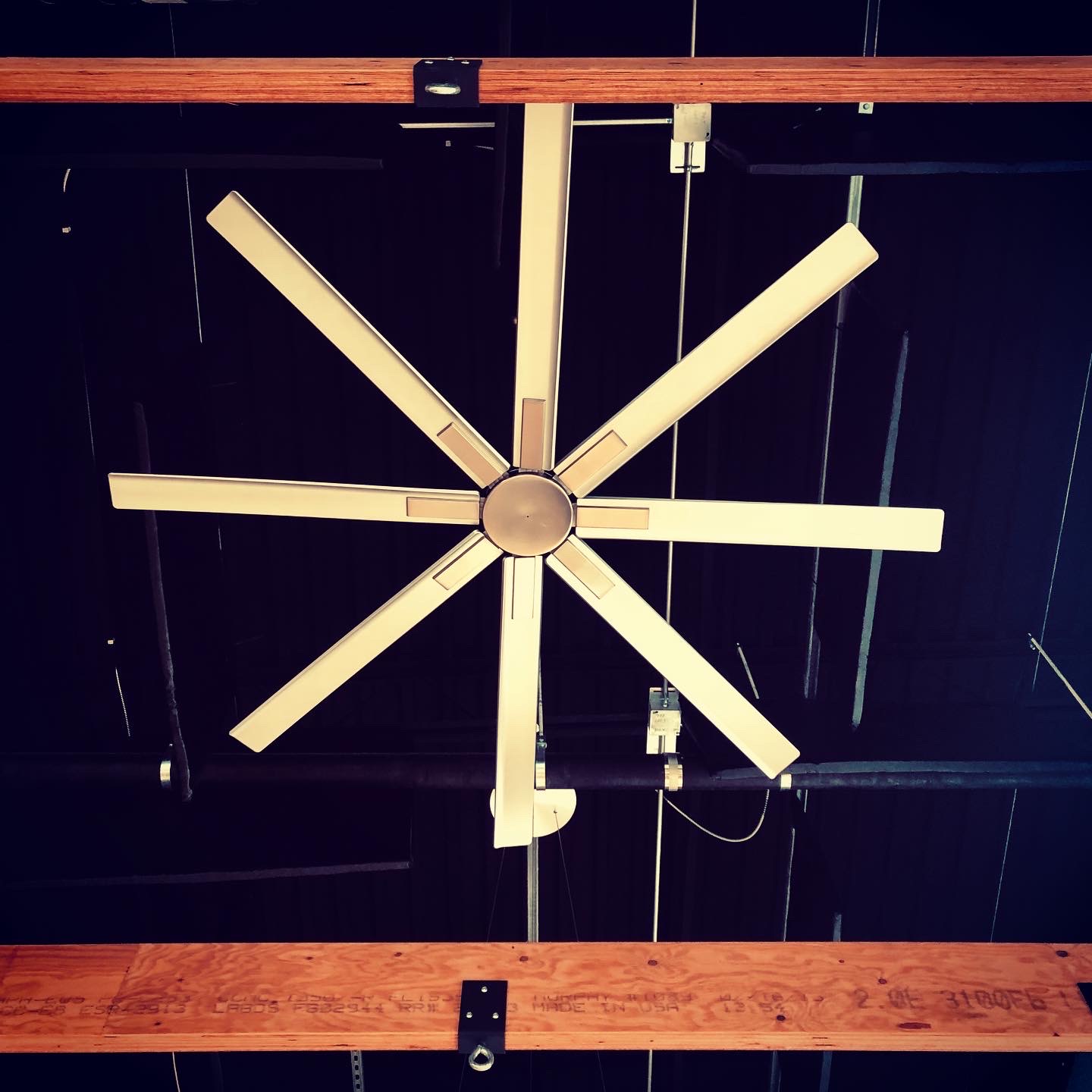
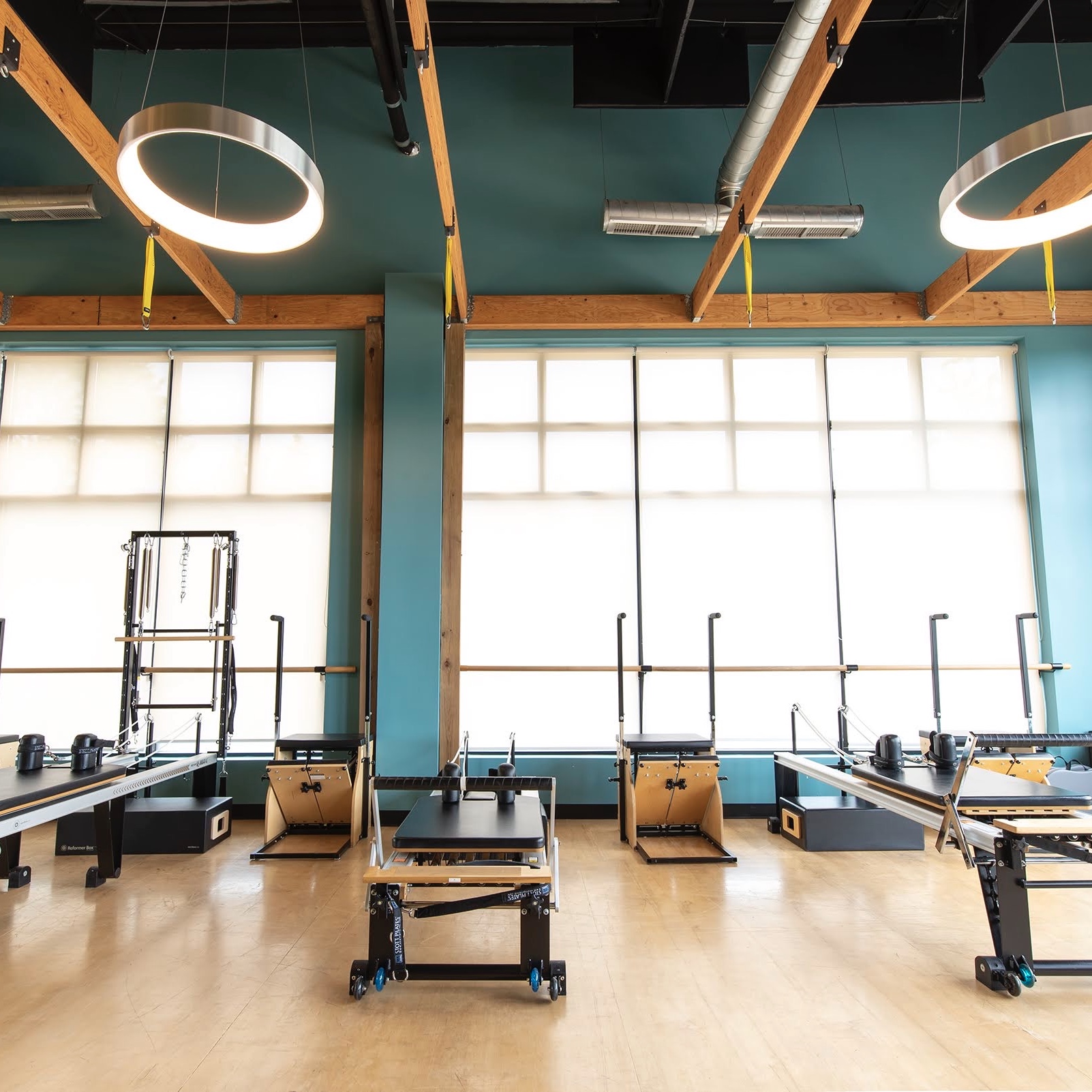
How to Keep Up Your Fitness Routine While Traveling
The latest blog from Elaine Economou about working out while traveling is now posted on the popular website, Sixty and Me.
“Once you evaluate the when and where of a travel exercise routine, figuring out how you will exercise is the next step. With internet access you can do virtually (pun intended!) anything you want. Online fitness options—both on demand workouts and livestream classes—are widely available. You don’t need to have any fancy equipment or props taking up space in your suitcase. Use a beach towel instead of a mat and water bottles as hand weights. That book you brought along to read on your trip can make a great substitute yoga block.”
—Elaine Economou
Tips for Working Out While Traveling
In this blog, Elaine will guide you though how to think about your available time and space on vacation. She’ll break down the advantages of the various online workout options. And, she’ll talk about what type of exercise you need most when you’re on the road. Give the following 30-minute Level 1 Pilates class a try on your next vacation using therabands for resistance. Perfect for your suitcase! Be sure to read the full blog over on Sixty and Me to learn even more strategies.
Read How to Keep Up Your Fitness Routine While Traveling.
Move More, Feel Better
We know the more you move, the better you feel. That includes finding smart ways to make movement part of your routine, even when traveling. For wherever life takes you or from the comfort of your very own home, MOVE Wellness offers your first livestreamed class free! Support the activities you love to do in life by starting today!
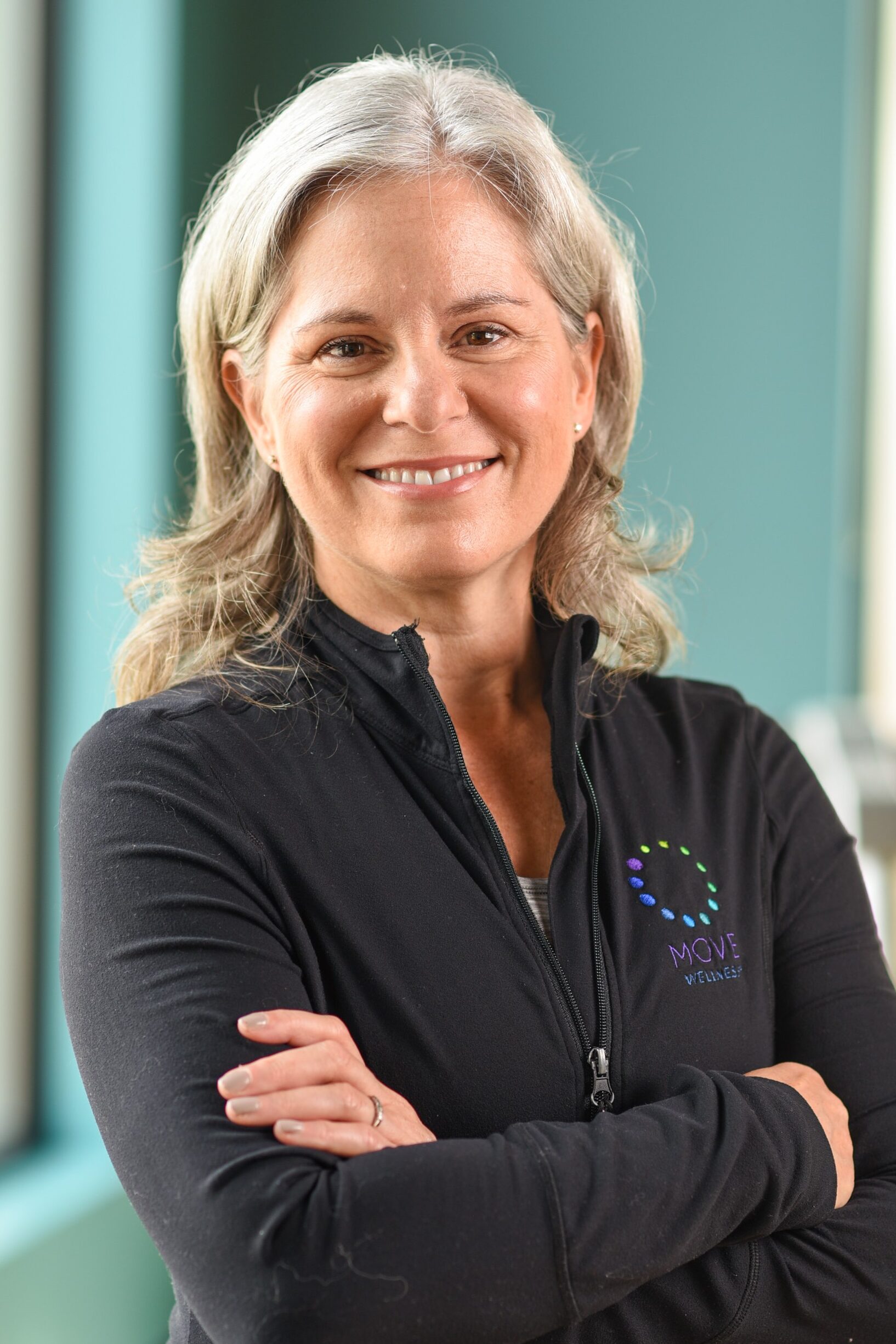
About Elaine Economou
Elaine Economou helps people move with ease, strength, and joy. Her passion is empowering people to understand their unique bodies to build strength, and do more of what they love. As co-founder of MOVE Wellness®, Elaine leads a global movement community of clients in high-caliber, in-studio, and interactive livestream training.
Find all of Elaine’s Sixty and Me blogs on her author page.
The latest blog from Elaine Economou is now posted on the popular website, Sixty and Me.
Do you have a mindfulness routine? A lot of us would automatically associate mindfulness with meditation and we’d be right. Meditation is a form of mindfulness, but it’s not the only way to be mindful. Mindfulness can include movement too. Things like breathing routines, gentle exercise, simple movements, and a variety of activities that connect the mind and the body. In this short video, Elaine will introduce you to mindfulness and mindful movement and how it has positive and lasting effects on the entire body.
Getting started with mindful movement
Read the full blog for our list of 10 simple mindful moments to get you started. Each of them takes 10 minutes or less and they are designed to mix and match throughout your day. You’ll be on your way to starting your own mindfulness practice in no time.
Move more, feel better
It takes time to build a new habit or routine. Start by adding one or two of these activities to your day and add more as you can. When you’re ready to expand on this simple list of activities, a movement professional can help you learn to dive deeper into your mindful movement practice. Join us in our Ann Arbor, MI studio for private or small group classes. You’re also invited to enjoy a free trial of interactive livestream classes. Whichever path is right for you, support the activities you love to do in life by starting your personal movement journey today.
About Elaine Economou
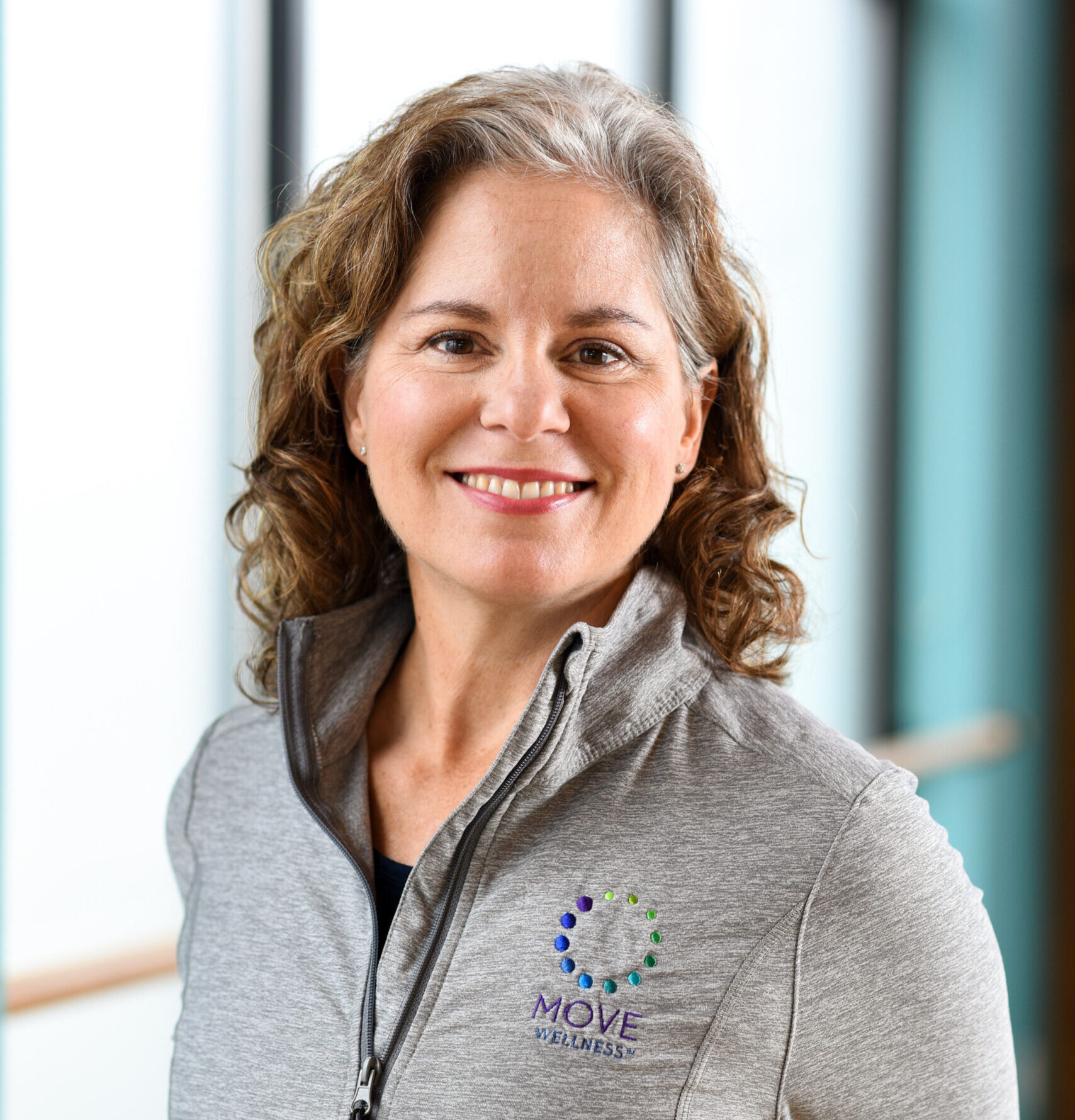
Elaine Economou helps people move with ease, strength, and joy. Her passion is empowering people to understand their unique bodies to build strength, and do more of what they love. As co-founder of MOVE Wellness®, Elaine leads a global movement community of clients in high-caliber, in-studio, and interactive livestream training.
Find all of Elaine’s Sixty and Me blogs on her author page.
Submit a Comment
Livestream Zumba® classes have arrived! This summer, MOVE Livestream is offering three different levels: a Zumba® class, a Zumba® Gold class, and a Zumba® Gold Chair class. I absolutely love teaching livestream Zumba® classes: Each class feels like a dance party! While you are moving and grooving to fun Latin and World rhythms in a Zumba® Class, you are getting your heart rate up, conditioning your muscles, working on balance and flexibility, and boosting your energy to feel great after each class. And the best part is that previous dance experience is not required. Zumba® classes are great for everybody and every body.
Choose the class that’s right for you
Zumba® Class
A Zumba® class mixes low-intensity and high-intensity moves for an interval-style dance party workout. Once the Latin and World rhythms take over, you’ll see why Zumba® Fitness classes are often called exercise in disguise. During a Zumba® class, the instructor typically uses visual cues to show what step is coming next and how many repetitions of each dance move are done. Once you get comfortable with the steps, it’s time to pump it up and get grooving!
Zumba® Gold
A Zumba® Gold class takes the same Latin and World rhythms and places an emphasis on the low-intensity moves seen in a Zumba® class. This class is designed for active older adults or anyone who is looking for a modified Zumba® class. In a Zumba® Gold class, the instructor will give visual and verbal cues to help participants know what dance move is coming next. We focus on all the elements of fitness: cardiovascular, muscular conditioning, flexibility, and balance. In this class you will be safe to dance, and you will feel good in your own body.
Zumba® Gold Chair
In a Zumba® Gold Chair class, you are seated in a chair. This is the perfect modification for individuals who want to feel safe while taking class by removing the element of balance from the equation. Bringing in elements of a Zumba® Gold class, this low-intensity class is perfect for working on range of motion, coordination, and muscular conditioning. This class will get you moving and grooving to some fun Zumba® rhythms.
What do you need for a Zumba® class?
During your Zumba® class, I recommend wearing comfortable shoes that you can move in and will keep you stable. For a Zumba® and a Zumba® Gold class, you will need an open space with about four steps to the right, four steps to the left, and four steps forward and backwards. If you are interested in taking a Zumba® Gold Chair class, a chair without arms works best to allow your arms full range of motion. And in any Zumba® class, we sweat… so always keep a water bottle nearby.
What can you expect in a Zumba® class?
The general class structure includes a warmup with step touch, cardio, and toning, core steps and choreography, and a cooldown to bring your heart rate down and stretch. I cannot emphasize enough; you do not need dance experience to take a Zumba® class! If you feel like you don’t have any rhythm you can still show up for yourself and enjoy this dance party… and get a workout in 🙂
The more you move, the better you feel
Are you nervous about doing the wrong steps? Keep in mind that a Zumba® class is not a dance class. It is not about learning the choreography or doing the right steps. It’s just about moving. I will keep the songs and steps the same from class to class, so every week will feel better as you get more comfortable with the moves. Taking a Zumba® class is, in my opinion, is a great way to feel good in your own body and to groove out all your stress. I can’t wait to see you on the dance floor!
Livestream Zumba® classes start June 14th. Enjoy your first class free of MOVE Livestream and join the dance fitness party this summer.
- Zumba® Gold Chair, Mondays at 1:30 p.m.
- Zumba®, Fridays at 4:00 p.m.
- Zumba® Gold, Saturdays at 9:00 a.m.
